Mahasiddha Naropa: The Indomitable Disciple
(By Tsem Rinpoche and Pastor David Lai)
The great Mahasiddha Naropa, or Naropada, was born the prince of an ancient kingdom in East India. Descended from a notable and respected royal family, Naropa’s father was the great King Santivarman and his mother was the glorious Queen Srimati.
King Santivarman and Queen Srimati had a daughter, Srijnana, but they had always wanted a son. Unfortunately, all attempts to bear a son were in vain and so they consulted the mystic Yasomati. The mystic declared that they should take heartfelt refuge in the Three Jewels, develop a sublime motivation and make offerings to the Gurus, yidams, dakas, dakinis and Dharma Protectors. That would be the cause for the royal family’s aspirations to be fulfilled.
The royal family arranged for lavish offerings to be made in accordance with the mystic’s advice, and it is said that Naropa was conceived in this manner. That night, the queen had a dream in which the entire kingdom was enveloped in a brilliant light of indivisible bliss and emptiness. The next morning, she informed the king of her dream and he replied,
“A sentient being has taken residence in your womb. It is through the kindness of the Buddhas that he will become a superior being.”
The royal couple continued to make offerings until the special prince was born. In 1016 CE during the fourth lunar month, Naropa came into the world amidst auspicious signs of thunder, gentle earth tremors and a miraculous ray of light. At the time of his birth, he bore all the signs of an exceptional being endowed with special marks and signs. Upon examining Naropa, the Brahmin Guhyamati prophesied that he would be like the son of King Suddhodana. If he was to take up the religious life, he would be the ‘Lord of the Earth’ just like Prince Siddhartha. Thus, the Brahmin gave the young prince the name Samantabhadra.
From a young age, the prince seemed to possess profound wisdom and a sense of loving-kindness and compassion that was beyond his age. From supernatural insight, he would from time to time spontaneously relate incidents from his previous lives and even declare his future qualities and deeds.
As he grew older, it became more and more apparent that he should be in the monastery. In the same way that jewels are not meant to be left on the floor but kept in beautiful ornamented chests, it was not appropriate for Naropa to dwell amidst worldly folk. Even the royal family came to realise that such an extraordinary son should be in the monastery, although they were not happy about it.
Yet, despite being followers of the Dharma, the king and queen were concerned that their son would not fulfil his duties to carry on the royal lineage. In an attempt to deter their son from his spiritual inclinations, the king discouraged him from reading and writing. Nevertheless, the young prince found a way to learn in secret and eventually became a great scholar.
Early Pursuit of the Dharma

The holy statue of Mahasiddha Naropa found within his meditation cave in Nepal. Click on image to enlarge.
When Naropa was just eight years old, he could already perceive the faults of ordinary existence and became disgusted with the world. His mind was set on Dharma practice and every action he took was motivated by this. Despite his tender age, he urged his attendants to practise the Dharma and reminded everyone of the truth of impermanence. Whenever he witnessed someone practising virtue, he would reward them gladly. Conversely, whenever he saw someone committing negative actions, he would be deeply affected by it.
He eventually pleaded with his parents to allow him to travel to Kashmir to study the Dharma. His mother was deeply saddened and, holding him to her chest, she refused to let him go. He softly sang a verse, entreating his mother not to hold him back as the opportunity to practise the Dharma was rare and the chances of attaining a human life were just as rare. In the end, his mother relented and at the age of 11, Naropa travelled to Kashmir.
Kashmir at that time had many renowned monastic institutions and was a great seat of Buddhist learning. Naropa met the great master Gaganakirti there, became his lay disciple, and was given the name Gaganagarbha. Under this master’s tutelage, Naropa studied grammar, medicine, epistemology, dialectics and the arts. Later, he studied and mastered the Kalachakra Tantra, the Samvarodaya Tantra and the Sariputrapariprccha Sutra; various medical treatises along with treatises on grammar; and the four main Indian languages. Following that, he studied and mastered logic through the Pramanasangraha treatise and its seven commentaries, many of which were composed by Nagarjuna, Aryadeva and other great pandits of India.
Coming of Age
Naropa remained in Kashmir for three years and emerged as a leading scholar of the five branches of learning – language, logic, medicine, arts and spirituality. He then returned home with 13 great scholars. Unfortunately, his parents grew impatient as they watched their son delve ever deeper into the Dharma. In the end, the king sent the scholars off with lavish gifts, and demanded that it was time for the prince to choose his bride and fulfil his familial duties. Naropa pleaded for permission to pursue the Dharma instead, but his parents would not back down and threatened to end their lives if he did not comply with their wishes.
Hard-pressed to come to a decision, Naropa reluctantly agreed to take a wife. As a last resort, he came up with a list of special qualities that his bride should have, thinking that such a combination of extraordinary virtues would be impossible to find in a single person and, in this way, he could perhaps avoid marriage. The king grew despondent as he contemplated the impossible task of looking for a girl with such attributes. However, the chief minister approached the king and offered to arrange the search for this illusive girl.

A thangka of Mahasiddha Naropa with his yidam, Vajrayogini on the top left and smaller figures of his Nepali disciples, the Pamthingpa brothers. Click on image to enlarge.
A year passed and the search party eventually arrived at a village in Bengal where they discovered a girl who matched the description given by Naropa. Her name was Vimala and she was from a priestly Brahmin family. On behalf of the prince, the search party pleaded with the girl’s father for her hand in marriage. At first, the father outright refused but later relented when the search party threatened to commit suicide. Overjoyed, they returned to their homeland and reported the good news to the palace.
Shortly thereafter, the king sent his ministers along with a retinue bearing elaborate gifts to escort Vimala to the palace. Although Naropa did not expect such a girl to exist, he went ahead with the marriage just as he had promised, and they were wed according to tradition. Later, he instructed his wife in the teachings of the Mahayana tradition, and she became his devoted disciple and served him accordingly.
However, the feelings of renunciation remained ever strong in Naropa, and one day, not being able to withstand his desire to renounce samsara any longer, he spoke to his wife about it. He told her of his spiritual aspirations that had never left him since he was a child. He spoke of his wish to leave home and of being hampered by the guilt of disappointing his parents. Lastly, he expressed his need to leave his royal life behind one way or another, and gave her permission to remarry or follow the path of the Dharma.
Vimala replied that she realised death could come at any time, and so she would not hinder his Dharma practice. She offered herself as a scapegoat and told him to say that she had many faults. In this manner, their marriage could be annulled.
So, Naropa approached his parents and told them that his wife had beguiled him. He announced that he could no longer live with her. His parents tried to talk him out of it and even enlisted the help of Vimala’s father to smooth things between the two of them. However, so determined was Naropa to leave the marriage that both sets of parents turned to Vimala to seek proof of his accusations.
In accordance with her agreement with Naropa, Vimala cried and admitted that she had no real virtue and that she had indeed beguiled him. She accepted the separation and they went through divorce proceedings. Thereafter, according to some scriptural traditions, Vimala continued her practice and eventually became known as the famous Niguma, the black dakini. In other scriptural traditions however, Niguma was actually Naropa’s sister.

According to some traditions, the great yogini Niguma is said to be Naropa’s former wife. Click on image to enlarge.
After the divorce, Naropa entered a hermitage called Anandarama when he was just 25 years old. The abbot, Buddhasarana, and the master Jnanaprabha gave him his novice vows, at which time he was also given the name Buddhajnana. He remained with them for three years to study the Vinaya or the monastic code of conduct; the Lalitavistara Sutra that contains stories from the Buddha’s life; the Karmasataka collection of monastic tales; the Smrtyupasthana or preparatory stages of meditation; and the Jataka tales of the Buddha’s previous lives. He went on to study Tantra under many other masters and scholars. He learned the Guhyasamaja system specifically, but also other important tantric treatises.
When he turned 28, Naropa travelled to Puna in Kashmir in order to receive full monastic ordination. Amidst a congregation of Sangha, the abbot Dharmaguru ordained Naropa in the presence of great masters like Dharmajnana and Dharmabodhi, and gave him the name Dharmadhvaja. Naropa remained in Kashmir for three more years, and studied the Kalachakra Tantra; the Vimalaprabha, the Stainless Light commentary to Kalachakra; the Mahamaya Tantra; and Sri Catuhpithamahayoginitantraraja. Upon completing his studies, he travelled to Pullahari.
While at Pullahari, Naropa became known as a great master and scholar. He gathered many disciples and monks around him, many of whom later became extremely learned. Some even developed signs of realisation as well. His fame spread like wildfire and he became known as the elder, Sasanadhara. Aside from teaching and practice, he spent the next six years composing various commentaries to the practices of the Guhyasamaja, Cakrasamvara and Hevajra Tantras, as well as various other works on Sutra and Tantra.
Entering the Great Nalanda Monastery
Nalanda Monastery at that time was the largest and most prestigious monastic institution that had ever arisen in India. It is said that there were 500 scholars in Nalanda and 84 were extremely famous. Amongst them, four stood out as the greatest of all and each was installed as one of the four gatekeepers (mahapanditas) of the monastery, according to the cardinal directions.
At that time, Prajnabhava was the foremost authority on the immediate and intuitive understanding of reality and he was the eastern gatekeeper. The legendary Krsnacarya or Nag-po-pa was the foremost authority on the Vinaya or monastic discipline and he was the southern gatekeeper. Ratnakarasanti was foremost in his knowledge of grammar, epistemology or Abhidharma, spiritual precepts, and logic or pramana and he was the western gatekeeper. Jetari was foremost in his realisation that rejection and attainment are the same when all obstacles are overcome and he was the northern gatekeeper.
One day, Jetari passed away suddenly and no scholar in the monastery was fit to take his place. Therefore, 500 scholars gathered and decided that Naropa was the only master with the wisdom and knowledge deep enough to take up the post of gatekeeper. Representatives of the monastery were dispatched to appoint Naropa to his position and it took the monks nine days of pleading before Naropa finally accepted the appointment. Thereafter, Naropa was escorted to Nalanda and installed in his position.

The ruins of one of the old courtyards of Nalanda Monastery.
The old traditions of Nalanda dictated that the appointment of such an esteemed scholar should be followed by a grand debate with scholars of other philosophical systems. Accordingly, the monastery issued an official announcement for the debate and invited scholars from all over to attend. It was to be held a fortnight later and a throne was set up, right in the middle of the monastery, for the king who would preside over the event. Scholars were to be seated on the left and right of the throne, Buddhists on one side and Hindus on the other.
During the first two weeks of the event, a succession of Buddhist scholars were called upon to debate with Naropa but none could defeat him. In the next two weeks, the greatest Hindu scholars were called forth to debate with Naropa and once again, none could refute his points or defeat him in debate, and he remained victorious throughout the event. As a result, 100 Hindu scholars shaved their heads and converted to Buddhism while 600 more became ordained as Buddhist monks.
King Digvarman presided over the debate and proclaimed Naropa the champion with great pomp and ceremony. Thus, Naropa ascended the seat as the northern gatekeeper of Nalanda, and was given the name Abhayakirti.

The cave where Naropa meditated in the 11th century. Lamayuru Monastery, Ladakh. Click on image to enlarge.
In Search of His Guru: The Twelve Minor Trials
It is said that Naropa’s search for his Guru began with an impetus that was brought on by none other than Vajrayogini herself. One day, Naropa was sitting quietly in his room reading a Buddhist text when a terrifying shadow suddenly appeared on the floor. He immediately looked up to see what it was and, to his surprise, he saw a very ugly, wrinkled and disheveled old hag with a gaping, toothless mouth standing before him. She was so decrepit that she needed the support of a walking stick.
She hobbled over to Naropa and asked, “What are you reading?” Naropa replied, “I am studying the Buddha’s teachings.” The old hag then asked, “Do you understand the words or the meaning?” Naropa immediately replied, “I understand every single word in these teachings.” Naropa’s response brought on great joy and jubilation in the old woman. She laughed and danced in an ecstatic manner and said,
“It is very fortunate for this earth that such a scholar as yourself exists!”
Since the old woman was so jubilant at the mere mention of his literal understanding of the Sutras, Naropa thought that she would be even more joyful if he said that he understood the essential meaning of the Dharma. So Naropa added, “I also understand the meaning of the teachings.” The expression on the face of the ugly old woman immediately switched from joy to sadness, and she fell to the floor and beat it with both her hands and cried, “To think that such a great scholar could actually utter a lie!” This embarrassed Naropa and he asked, “Is there anyone who can understand the inner meaning of the Dharma?” The old woman replied, “Yes, my brother, Tilopa.”
The moment Naropa heard the name “Tilopa,” pure devotion arose in his mind and tears came to his eyes. He asked, “Where can I find this master?” and the old woman replied,
“Go search for him. If your mind is filled with devotion and confidence, and you yearn to meet him then, the right direction will appear to you.”
The old hag uttered these last words then disappeared like a rainbow fading in the sky. Although she was actually Vajrayogini, Naropa was only able to perceive her as an ugly old hag due to his negative karma and obscurations that were not completely purified. His mental obscurations prevented him from perceiving her true identity.
Naropa decided there and then that he would go in search of Tilopa. He gave up all his belongings and books. He then requested leave from the abbot of Nalanda University. Wanting very much for him to stay, the abbot, scholars and the other gatekeepers requested that Naropa remain. However, Naropa had made up his mind and, with a deep yearning, he set off on his search for his master while requesting Tilopa’s blessings in his heart.
 A dramatic thangka painting of Mahasiddha Tilopa with his disciple Naropa at his feet. Click on image to enlarge.
A dramatic thangka painting of Mahasiddha Tilopa with his disciple Naropa at his feet. Click on image to enlarge.During his search for Tilopa throughout the length and breadth of India, Naropa experienced extreme hunger, thirst and exposure to the elements, but he was not deterred by the hardship. The many obstacles that he had to overcome have become known as the “Twelve Minor Trials of Naropa.”
He first encountered a limbless leper woman, who blocked his path and was unable to move aside. She told him to go around or jump over her if he was in a hurry. Pinching his nose, Naropa jumped but the woman disappeared into a rainbow halo and all he could hear were words admonishing him for being fettered by habit-forming thoughts and limitations. After that, he fell unconscious.
When he came to, he continued on his journey. While on the road, he came across a dog infested with lice and maggots. The stench of rotten flesh was overpowering and so, he had to pinch his nose and jump over the animal. The dog arose in the air, disappeared in a rainbow halo once again and he heard a voice admonishing him for not developing compassion for all living beings in accordance to the Mahayana path. Again, he fell unconscious.
When he woke up, he continued along the path. He then came across a man who was in the midst of playing tricks on his parents. He asked for Naropa’s help to turn their minds around and in return, he would reveal Tilopa’s whereabouts. However, Naropa declined, and the man receded into rainbow light. He heard a voice admonishing him for not eliminating his ego.
Further down the road, he met with a ghastly scene. A stranger was tearing up a corpse for its intestines and when Naropa asked him for the whereabouts of Tilopa, the man said he would answer if Naropa helped him in the bloody act. Too afraid to help, Naropa declined. Once again, the man disappeared into rainbow light. A voice was heard admonishing Naropa for not cutting out samsara, and he fell unconscious.
When he came to, he chanced upon a man with an open stomach wound and another man cleaning the wound with water. Naropa asked if the man knew Tilopa’s whereabouts. The man replied that he would show the way if Naropa would first help him clean the wound. When Naropa declined, the man disappeared into rainbow light and a voice was heard admonishing him for not cleansing his mind stream of samsara and all habit-forming thoughts. He fell unconscious.
Then, he came to a great city and went before its king, asking if he knew of Tilopa’s whereabouts. The king told him that he would show him the path if Naropa married his daughter. Before Naropa could agree, the king took his daughter, the dowry and withdrew from the room. Discovering that he was locked inside by a kind of spell, Naropa was about to use a forceful ritual according to the Chakrasamvara Tantra to free himself when the entire city disappeared into rainbow-coloured light and a voice admonished Naropa for falling into the pitfalls of desire and hatred. He fell unconscious.
When he came to, he travelled down the road and came across a hunter with a pack of hounds, a bow and some arrows. Naropa enquired if he knew of Tilopa’s whereabouts. The hunter said he would answer if Naropa took up the bow and arrow to kill a deer but Naropa declined. The hunter then sang a verse to Naropa and disappeared. The verse revealed that Tilopa would be fishing at the lake the next day. At long last, Naropa had a hint of where he might find his Guru.
Naropa went to the lake and discovered an old couple living on its shore. He asked them if they knew where Tilopa was. The old man replied that Tilopa had been living with them but before he would lead Naropa to Tilopa, he asked his wife to bring Naropa some food. The old woman started to cook some fish and frogs in the fire. This horrified Naropa because he didn’t eat meat and it was against his vows to have evening meals.
Later, when the old man discovered that Naropa didn’t touch his meal, he flew into a rage and threw the pan into the fire, causing the fish and frogs to rise into the air. The old man admonished Naropa for not consuming the fish of habit-forming thoughts and craving after attachments instead. Finally, he said that he would next be killing his parents, a clue as to his next manifestation. Then, Naropa fell unconscious.
Later, Naropa came across the terrifying scene of a man who had impaled his father on a stake and imprisoned his mother in a dungeon. Both parents were crying to be released from their misery and this adversely affected Naropa as he mustered all his courage to ask the man where Tilopa might be. The man answered, “If you help me to kill my parents who have brought me tremendous problems, I will show you Tilopa.” Naropa hesitated as he felt sorry for the parents and did not want to collaborate with a murderer. The man disappeared and a voice admonished Naropa for not eliminating the three poisons of ignorance, hatred and desire, along with the fact that he would next appear as a beggar. Naropa fell unconscious.
When he came to, he continued his journey. Down the road, Naropa came across a hermitage and the residents recognised Naropa as the great Abhayakirti and asked if he had come to visit them. They received him with great pomp and circumstance as accorded by his status. Then, they asked him again for the purpose of his visit and Naropa responded that he was looking for Tilopa. The residents said that his search was over as there was a beggar living on the premises with that name. Naropa found the beggar Tilopa sitting over a fire and frying fish. When the other residents saw what he was doing, they were furious and began hitting the beggar. The beggar asked, “Don’t you like what I am doing?”
“How could we when you are doing something so evil?”
The beggar snapped his fingers, chanted “Lohivagaja (Fish, go away)” and the fish miraculously returned to the lake. Naropa folded his hands and begged for teachings. In response, Tilopa took his hand, placed a handful of lice into his palm and said,
“If you would kill the habit-forming thoughts and ingrained tendencies on this endless path to the ultimate nature of all beings, first, you must kill these.”
Naropa hesitated and said that he could not do it. Tilopa disappeared with parting words admonishing him for not killing the ‘louse’ of habit-forming thoughts. Then he said Naropa would visit a freak show the next day.
The dejected Naropa continued his search and came to a wide-open plain populated by strange people with various physical abnormalities. He asked one of them if he knew where Tilopa was, and was told that if he really wanted to find Tilopa, he would have to do as follows:
Out of confidence, devotion and certainty, become
A worthy vessel, a disciple with the courage of conviction.
Cling to the spirituality of a Teacher in the spiritual fold.
Wield the razor of intuitive understanding as the viewpoint,
Ride the horse of bliss and radiance as the method of attention,
Free yourself from the bonds of this and that as the way of conduct.
Then shines the sun of self-luster which understands
One-eyedness as the quality of many,
Blindness as seeing without seeing a thing,
Deafness as hearing without hearing a thing,
Muteness as speaking without saying something,
Lameness as moving without being hurried,
Death’s immobility as the breeze of the Unoriginated (like air moved by a fan).
When he had finished, Naropa fell unconscious. These words spell out the basic symbols of the Mahamudra, the Great Seal, that introduces oneself to the nature of the mind and leads to Enlightenment. What Naropa had just experienced was the manifestation of his Guru to purify his mind.
Naropa Finally Meets Tilopa
Somehow Naropa found himself in a village. After the hardships of enduring the “Twelve Minor Trials”, Naropa was at the point of contemplating suicide while he held a razor, thinking that he would continue his search in another lifetime. Then from the sky a booming voice said, “Not far from this village is the master whom you seek. You must have faith and confidence in him.” Naropa ran to the outskirts of the village and enquired with the villagers about the whereabouts of Tilopa.
Nobody seemed to know of a master by the name of Tilopa, but people pointed to a fisherman drying fish down by the river who was known by that name. Naropa was taken by surprise to hear that Tilopa was a fisherman but he recalled his prior experiences of his Guru’s manifestations and realised that Tilopa manifested as a fisherman due to his own negative perceptions and mind.
Without dwelling too much on this fact, Naropa went down to the river to meet Tilopa. The moment he arrived, he saw that Tilopa was transferring the consciousness of each fish to a pure realm with a snap of his fingers. After doing that, he would take each fish and bite its head off, throwing the heads onto a small pile, and place the body to dry on the sand so it could be taken to the market to be sold.
Naropa ran over, prostrated in the dirt at Tilopa’s feet and requested to be accepted as his student. However, Tilopa turned around, scrutinised Naropa from head to toe three times and said,
“No matter from what angle I look at you, you seem to be of a royal family. You look like royalty and speak like royalty, so why would you come to seek a low-caste fisherman for teachings?”
Following the Teacher: The Twelve Major Trials
Having endured the “Twelve Minor Trials” in order to come face to face with Tilopa, Naropa next had to go through the “Twelve Major Trials” over the next 12 years under his Guru’s tutelage and guidance before he attained complete Enlightenment.
In the first year, Naropa approached Tilopa and requested for instructions but Tilopa just looked at him and walked away. Naropa followed Tilopa as he climbed the stairs of a multi-storeyed temple. When they got to the top, Tilopa sat down, resting his back against the wall, and said, “Well, if I had a devoted student, he would jump from here.”
Naropa immediately took the plunge without hesitation and landed in a heap with all his bones broken. In tremendous pain, Naropa thought he would not achieve Enlightenment in that lifetime and began making prayers to meet Tilopa again in his next life. While he was praying, Tilopa appeared next to him and asked, “What happened to you?” Naropa replied, “I jumped, because my lama told me to do so. But I am lying here in so much pain with all my bones broken. It is terrible. I feel like I am half dead.” Tilopa then told him, “Your body is a result of your actions and your disturbing emotions. That is what creates your physical body. In a way, it is not so important if you have it or not.” He ran his hand over Naropa’s skin and completely healed him. Then Tilopa transmitted the teachings on the Ordinary Wish-Fulfilling Gem to Naropa.
After a year had passed, Tilopa came over to Naropa and said, “Why didn’t you ask me for more instructions?” Immediately, Naropa started to offer a mandala and requested for instructions, and once again Tilopa walked away with Naropa following in his wake. They came to a big empty field with a bonfire in the middle. Walking over to the fire, Tilopa said, “If I had a student who was really devoted, he would jump into the fire.”
Naropa immediately went into the fire and suffered tremendous burns as a result. Tilopa then came over and asked, “What happened to you now?” Naropa answered, “Well, my body is burnt and I am suffering.” Tilopa replied, “It is alright to burn self-clinging and I have the practice and instructions on how to balance the internal elements in order to do this.” He touched Naropa’s skin and healed him completely, and the fire disappeared. Tilopa then gave Naropa the teachings on One-Valueness.
A year later, Naropa went into a town to beg for alms. He was offered some very good food from a banquet, which he brought back to Tilopa. Tilopa greatly enjoyed the meal and said, “Oh, this is delicious; the food is really good.” Pleased to see his Guru so light and happy, Naropa decided to go and beg for more food and told Tilopa of his intentions. Tilopa said, “One can only go to beg for food once and that is the tradition here. If you go again, you will get into trouble but you can try. Why not? Take this water. If you have problems you should sprinkle the water. If they are still after you then take this wooden sword and make circles in the air. Then you should be alright so, go and get the food!”
Naropa returned to the town but since he could not beg for more food, he resorted to stealing it. As he tried to escape, he was caught red-handed and the townsfolk came after him. He first sprinkled the water that Tilopa gave him and a lake appeared between him and his pursuers. Next, he used the wooden sword, but, by using it, he was trapped by an iron fence so it was very easy for the people to catch him. They first set him on fire and when he escaped, they caught him again and beat him up terribly. When he finally made it back to safety, Tilopa healed him and bestowed upon him the instructions on the Wish-Fulfilling Gem of Commitment.
Naropa remained with Tilopa and continued his practice. One day, Tilopa suddenly walked away and Naropa followed him. They came upon a deep pond full of leeches and Tilopa settled at the shore in meditation. Naropa went up to Tilopa, offered a mandala, prostrated before him and requested for instructions. Tilopa then said, “If I had a good student, he would make a bridge so I can cross over this pond.”
Naropa immediately began constructing a bridge but before he could finish, Tilopa decided to cross over. He stepped hard on Naropa’s back before jumping to the other side of the pond. Naropa fell into the water and it was terrible. The water was ice-cold and he nearly drowned. He was covered with leeches, which started sucking his blood. Tilopa asked him, “What is the matter? What is wrong?” Naropa replied, “The leeches are eating me alive and it is very cold. This is awful.” Tilopa then said, “This is not a problem. I can give you instructions that will warm you up and you will not feel any pain. I have the instructions on the Inner Fire, based on Emptiness.” Tilopa healed Naropa and then gave him the complete transmission of the Tummo or Inner Heat practice.
Another year went by while Naropa continued to practice. Then Naropa offered a mandala to Tilopa and requested further instructions from him. Tilopa told him to get ten pieces of bamboo, pour melted butter over them, apply heat to harden them, and then to sharpen them. Next, Tilopa took the sharpened sticks and inserted them all into Naropa’s body. He then walked away while Naropa was suffering terribly.
When Tilopa returned, he asked, “What happened to you?” Naropa answered, “I’m pierced by these bamboo sticks and it is extremely painful. I think I am going to die.” Tilopa then touched Naropa with his hand and the wounds and the pain disappeared. Thereafter, Tilopa transmitted the teachings on the Illusory Body to Naropa.
The following year, Tilopa came to Naropa and said, “Aren’t you going to ask me for more instructions?” Naropa quickly got up, prostrated to Tilopa and requested instructions from him. Tilopa left immediately. Naropa followed him and they came to a big sandy plain where a man was walking. Tilopa said, “Well, if I had a good disciple then he would go immediately and catch that man, otherwise he is going to harm me.”
Naropa tried his best to catch the man, running as fast as he could, but he couldn’t keep up. He finally collapsed on the ground, totally exhausted. Tilopa came up to him and asked, “What happened?” Naropa replied that he was trying to catch the man but he could not reach him. It was just like a phantom or a mirage. Tilopa then said, “Well, that’s how it is in samsara. Everyone is chasing after illusory objects and always trying to attain something which does not really exist. That’s the problem with samsara. Now I will give you instructions on Dream Yoga — that everything is like a dream.” Tilopa then transmitted the instructions on Dream Yoga to Naropa.
Naropa meditated for another year on Dream Yoga while Tilopa entered into deep meditation. After one year, Tilopa suddenly stood up and left. Naropa followed him, offered mandalas and requested for instructions but Tilopa did not speak. Finally, when they came across the wedding procession of a minister’s son, Tilopa told Naropa, “Well, if I had a good disciple he would go and pull down the groom from his horse. He would also pull the hair of his wife and try to get her.”
Naropa had no doubts and immediately did as Tilopa requested. Naturally, the entire clan was infuriated and beat him up. Returning only when Naropa was half dead, Tilopa touched him and again healed his wounds. This time he transmitted the teachings on the Clear Light.
Another year passed and Tilopa once again indicated that it was time for Naropa to request for more teachings. Announcing that those who sought instruction should follow after him, Tilopa left. After walking for a long time, they met a procession with a king and queen. Tilopa said, “If I had a good disciple, he would go and pull down the king from his horse.”
Naropa did exactly as requested and this time, he nearly died from his injuries after being beaten up by the king’s followers. Tilopa came over to him, healed his wounds and said, “The reason that it is still painful is because you have not dissolved your ego-clinging. Now I will give you the Phowa or mind transference instructions.”
Over the course of the year, Naropa practised the Phowa of mind transference. A year later, Tilopa left and Naropa, seeking more instructions, followed. When they arrived at a big plain, they saw an Indian prince accompanied by his servants, having some leisurely fun. Tilopa said to Naropa, “Well, this time there are not so many people. You should go and hit the prince, snatch his ornaments, and then come back to me. In case there are any problems, call me.”
Naropa hit the prince, took his ornaments and started running back to Tilopa. However the prince’s servants called for assistance and many soldiers, who were nearby, began to chase after Naropa. Naropa shouted, “Tilopa help me! Protect me!” He had just reached Tilopa when the soldiers caught up. Tilopa asked the soldiers, “What did he do?” They replied, “He hit the prince and stole his ornaments.” Tilopa answered, “That’s very bad. We should beat him up.” Together they beat up Naropa and he nearly died. When the troops left, Tilopa asked him what had happened. Naropa said, “Well, I was beaten up, and though you said you would help me, you did not. I think I will die this time.” Tilopa touched him, healed him and then gave him the Phowa teachings on resurrection at the point of death.
Naropa meditated for one year on this special form of Phowa and then requested for more instructions. This time, Tilopa instructed Naropa to take on a consort who was a good Dharma practitioner. Following this advice, Naropa married and at first, the couple were very loving but after some time, problems arose between them and they had many arguments. Naropa eventually became completely embroiled in his problems with his wife. During this time, Tilopa came to visit and asked how things were going. Naropa divulged that he and his consort were having a very difficult time. In response, Tilopa said, “These problems are caused by your dualistic clinging. You have to abandon dualistic clinging and passion and then rely on a tantric consort.” Tilopa then transmitted to Naropa the instructions on the Karma-Mudra practice. Next, Tilopa told Naropa that he had broken his monastic vows by having sexual intercourse with his consort. Therefore, he had to purify himself. Immediately, Naropa took a stone and hit his secret organ many times until he passed out. Then, Tilopa healed him and bestowed upon him the teachings on the Six-fold Sameness of Value.
A year passed and Naropa decided to request for more instructions. He offered the mandala and asked for teachings. In response, Tilopa requested for his consort. Naropa willingly obliged but his consort was still in love with Naropa and would cast sidelong glances at him. Noticing this, Tilopa became enraged and beat her up, saying that she cared not for him but only for Naropa.
Then, Tilopa looked at Naropa and asked him how he felt. Naropa replied that he was happy to offer up his consort and had no doubt in the propriety of Tilopa. This pleased Tilopa greatly and he decided to bestow upon Naropa the teachings on Mahamudra.
Naropa practised these teachings for a year, after which he once again offered a mandala and requested for instructions. Telling Naropa to follow him, Tilopa entered a desert. This time, no matter how fast Naropa ran, he could not keep up with Tilopa. This went on for some time until Naropa collapsed out of sheer exhaustion. He begged Tilopa to tell him if he had achieved any attainments through his efforts or if he had realised the ultimate.
In response, Tilopa said that Naropa should offer a mandala. As he had nothing else on him, Naropa obliged by using the sand of the desert. As there was no water to sprinkle on the mandala, he slit his wrist and offered his own blood. As he could not find a flower despite searching all around, he offered his head and limbs in lieu. Upon doing so, he passed out. When he came to, Tilopa asked if he was happy. Naropa replied that he was happy to offer a mandala of his flesh and blood to his guru. Pleased with the answer, Tilopa gave Naropa the teachings on the Intermediate State.
After undergoing such tremendous suffering for 12 years, Naropa once again requested Tilopa to give him the profound instruction. Tilopa replied, “You are not yet pure enough to be introduced to the nature of mind!” Without warning and with a wrathful expression, Tilopa removed his slipper and slapped Naropa across the face so hard that Naropa passed out. When he regained consciousness, Naropa had gained equal realisation to that of his teacher – he had attained the Mahamudra siddhi.
From then onwards, Tilopa became very loving towards Naropa and explained that he had to be very wrathful and subject Naropa to so much suffering for a reason. He said,
“The fact that I led you deliberately into many trials and tribulations does not mean that I am a cruel person. You see, your negative karma could not be purified by your own effort alone. It was only through experiencing hardship could you purify the negative karma that obstructed you from realising the ultimate nature of Buddhahood. Throughout all the hardship, you did not develop any doubts, hesitation, or wrong views, and you diligently obeyed all commands. In this manner, you were finally able to overcome all delusions and gain the highest realisation.”
On Receiving Vajrayogini
According to Keith Dowman in ‘Legends of the Mahasiddhas: Lives of the Tantric Masters‘, there was once a major wedding feast of a wealthy man’s daughter. As it was an honour and blessing for newlyweds to offer food to ascetics, Naropa, together with other mendicants, were given large helpings of the most exquisite curries from the wedding. When Naropa returned to Tilopa and laid out the curries, an amazing thing occurred. For the first time, Tilopa smiled at Naropa and when he finished eating the food, licking his fingers in delight, he asked, “Where did you find this, my son? Please return and fetch me some more.”
Naropa was delighted that Tilopa had called him ‘my son’. So he rushed to the celebration to ask for more. This happened several times. By the fifth time, Naropa was ashamed to show his face as the wedding party might think him greedy and deny him more curry, and a great inner struggle raged within him. Finally, unable to face his guru’s displeasure, Naropa decided to steal the entire pot.
Upon his return, Tilopa praised Naropa for lowering himself to such a level of humiliation, further commending him for all his years of perseverance. Tilopa then drew in the dirt, the ‘sindhura’ mandala of Vajravarahi, bestowed the initiation and blessing of Vajravarahi upon Naropa, and gave instructions on the meditations involved in the practice.
From that point forward, Naropa intensely engaged in her practice and within just six months, he gained Enlightenment. He beheld a direct vision of Vajravarahi in the form of Vajrayogini, which is today known as Naro Kechari or Naro Kachö (Naropa’s Dakini), with both of her sacred feet planted on the ground.
This special form of Vajrayogini represents a more potent form of her practice that brings quicker results for practitioners of today. Her mantra is the only mantra by which one can gain attainments just by reciting it, without any accompanying visualisations or meditations, as long as one has received her initiation from a qualified guru and kept up the vows and commitments.
Return to Pullahari
After his Enlightenment, Naropa returned to Pullahari where his former wife had became a great yogini after following Naropa’s earlier guidance. She had become known as the black dakini Niguma and is often referred to as Naropa’s sister (as it was an Indian custom to refer to one’s wife as a sister). A lineage of her instructions survives to this day.
Naropa is also renowned as the teacher of the Tibetan mystic, Marpa of Lhodrak. When a young Marpa first left Tibet, he traveled over the high passes to Parphing in Nepal. He stayed at Parphing for some time, adjusting to the climate, prior to traveling down into the hot plains of India.
It was at Parphing that he met two mendicant brothers, both disciples of Naropa who were known as the Pamthingpa brothers. This encounter led Marpa to eventually seek out Naropa and become his disciple. Marpa received the full Four Transmissions of Oral Instructions of Tilopa from his guru, and also gathered further instructions in Dream Yoga and the After-Death state. These teachings continue to be transmitted to modern-day practitioners as the Six Yogas of Naropa.
The Pamthingpa brothers also received the Vajrayogini initiation according to Naropa’s visionary experience and they passed the lineage to a Tibetan translator, Melgyo Lotsawa Lotro Drakpa, who brought the teachings north into Tibet.
A Tibetan Encounter with Naropa
A reliable historical account of Naropa comes from the writings of Ngatso Lotsawa, a Tibetan translator who visited Naropa at his monastery in Pullahari while waiting for an opportunity to meet Atisha at Vikramashila. He wrote,
I went alone as an insignificant monk to see the Lord Atisha but he was in Magadha for a year. So I thought I would go see the Lord Naropa, since his reputation was so great. I travelled east from Magadha for a month, as I had heard that the Lord was staying in the monastery known as Pullahari. I felt a great fortune due to past merit arising from being able to go see him. On the day I arrived, they said some feudal prince had come to pay homage to the Lord Naropa. So I went to the place where a great throne had been erected. I sat right in front of it.
Suddenly, the whole crowd was abuzz, “The Lord is coming!” I looked all over and I saw the Lord. He was physically quite corpulent, with his white hair [stained with henna] and bright red, and he had a vermilion turban on. He was being carried [on a palanquin] by four men, and was chewing betel-leaf. I grabbed his feet and thought, “I should listen to his teachings!” Unfortunately, people pushed me further and further from his feet and finally I was tossed out of the crowd. Therefore, I had the good fortune to behold the Lord’s face, but did not actually hear his voice.
Naropa and Tilopa Caves in Nepal
After Naropa attained Mahamudra Siddhi equal to his teacher, Tilopa assured him that they were inseparable. They had never been separated in the past, were not separate at present, and would never separate in the future. Tilopa and Naropa became so famous throughout India that in the eyes of the people, they were like the sun and the moon.
Naropa turned the wheel of Dharma uncountable times in all directions and continued the great legacy of his teacher, Tilopa. Their sacred bond remains to this day at their caves above Surya Ghat just upstream from the famous Pashupati Temple Complex in Nepal. These caves evoke the time when Naropa meditated in the cave at night while during the day, he would beg for food and attend to the needs of his Guru.
Intrepid pilgrims continue to pay homage at these caves in memory of Naropa’s pure devotion to his Guru, Tilopa, and also to connect with Naropa’s Dakini — Vajrayogini — with recitations of her praise, mantras and pujas.

Naropa and Tilopa Caves near Pashupati Temple Complex in Kathmandu, Nepal
Ascent to Kechara
The legendary Mahasiddha Naropa has since become synonymous with pure Guru Devotion, an essential attitude for Tantric practitioners everywhere. His legacy to the world is the great tantric tradition of Naro Kachö Vajrayogini and the Six Yogas of Naropa.
When it was time for Naropa to pass on, it is said that he ascended bodily into the Paradise of the Dakinis — Kechara, Vajrayogini’s Pure Land. Following in his footsteps, many other masters have ascended in a similar fashion to Kechara Paradise. In fact, all diligent practitioners of Vajrayogini’s Tantra can ascend to Kechara in this manner as long as they have pure samaya with their lama, faith in Vajrayogini, keep their vows and commitments especially the daily recitation of specific prayers and mantras to Vajrayogini, along with the bi-monthly tsok offering (tantric feast commitment).
This perfect story of the indomitable disciple Naropa has been told countless times in the great monasteries of India and Tibet to inspire practitioners on the tantric path. It is a timeless tale of the guru-student relationship and has been upheld as the perfect example of a disciple and the epitome of devotion to a teacher. I hope my retelling of Naropa’s story has inspired you to examine your own relationship with your teacher — your ultimate spiritual friend — and to always hold it as the precious foundation of your spiritual path.
Pastor David Lai
Recommended Reading (Free Download)
The texts above were sourced from legitimate book-hosting services offering these texts for free download. They are made available here for purely educational, non-commercial purposes. Some of the books above require appropriate initiation or transmission prior to reading. Therefore please check with your teacher before reading them.
Naropa Photo Gallery (Free Download)
VIDEO: Lama Yeshe introduces the Six Yogas of Naropa
Or view the video on the server at:
https://video.tsemtulku.com/videos/LamaYesheIntroducesNaropa.mp4
VIDEO: Tilopa & Naropa Caves Beside the Pashupatinath Temple, Kathmandu, Nepal
Or view the video on the server at:
https://video.tsemtulku.com/videos/TilopaAndNaropaCavesPashupatinath.mp4
VIDEO: Tsem Rinpoche doing puja by the picturesque Pashupati River next to Naropa Cave, Nepal
Or view the video on the server at:
https://video.tsemtulku.com/videos/TsemRinpochePujaPashupatinath.mp4
 Mahasiddha Tilopa. Click on image to enlarge or click here for more beautiful thangkas.
Mahasiddha Tilopa. Click on image to enlarge or click here for more beautiful thangkas. Kandarohi, Vajra Yogini and Dorje Shugden. Kandarohi is one of the Four Heroines of the Cardinal Directions from Vajra Yogini’s mandala and is known as the “Goddess of Action”. Click on image to enlarge or click here for more beautiful thangkas.
Kandarohi, Vajra Yogini and Dorje Shugden. Kandarohi is one of the Four Heroines of the Cardinal Directions from Vajra Yogini’s mandala and is known as the “Goddess of Action”. Click on image to enlarge or click here for more beautiful thangkas.
For more interesting information:
- Magadha Sangmo | 须摩提女
- Ra Lotsawa Dorje Drakpa: Master of the Vajrabhairava Tantra
- The Most Illustrious Panchen Sonam Drakpa
- Virupa – Lord of Miracles
- Thonmi Sambhota – The Inventor of the Tibetan Script
- Trisong Detsen, the Great Dharma King of Tibet
- Great Disciples of Atisha: Khuton Choje and Pandita Akaramati
- Lotsawa Loden Sherab – the Great Translator
- Khyungpo Neljor – The Yogin of the Garuda Clan
- The Vinaya Holder Duldzin Drakpa Gyaltsen
- Sonam Yeshe Wangpo
- Shakyashri Bhadra: The Last Abbot of Nalanda
- Kunkhyen Choku Ozer – Master of the Kalachakra and Guhyasamaja Tantras
- Great Savant of Tibet: Buton Rinchen Drub
- Sakya Pandita Kunga Gyeltsen
- Tsarchen Losal Gyatso: Lineage Holder of Vajrayogini’s Tantra
- Who is Tulku Drakpa Gyeltsen?
- Emperor Kangxi | 康熙皇帝
- Gedun Nyedrak: An Abbot of Gaden
- Kentrul Thubten Lamsang
- H.E. the 25th Tsem Tulku Rinpoche’s Biography
- Ngawang Sonam Gelek: Youthful Master of Discourse
Please support us so that we can continue to bring you more Dharma:
If you are in the United States, please note that your offerings and contributions are tax deductible. ~ the tsemrinpoche.com blog team















































































































































































































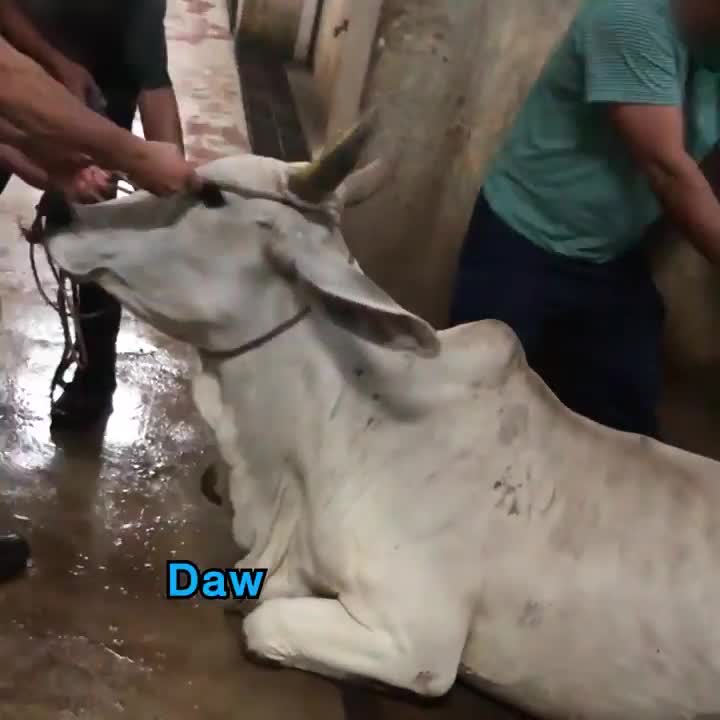






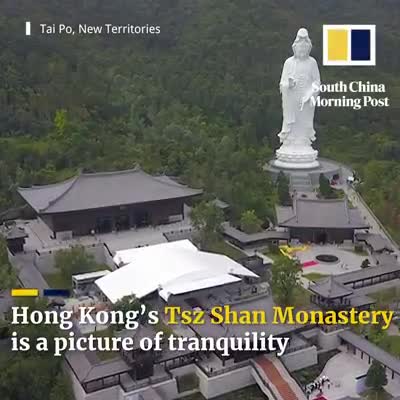

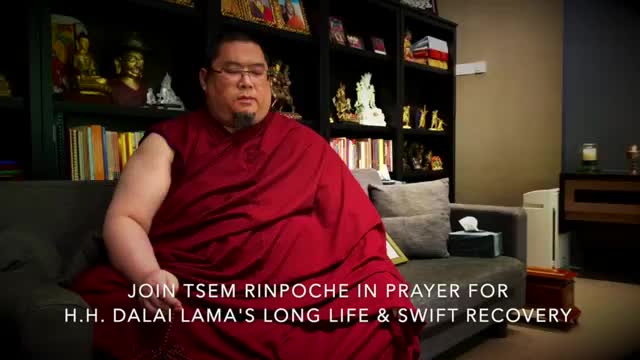

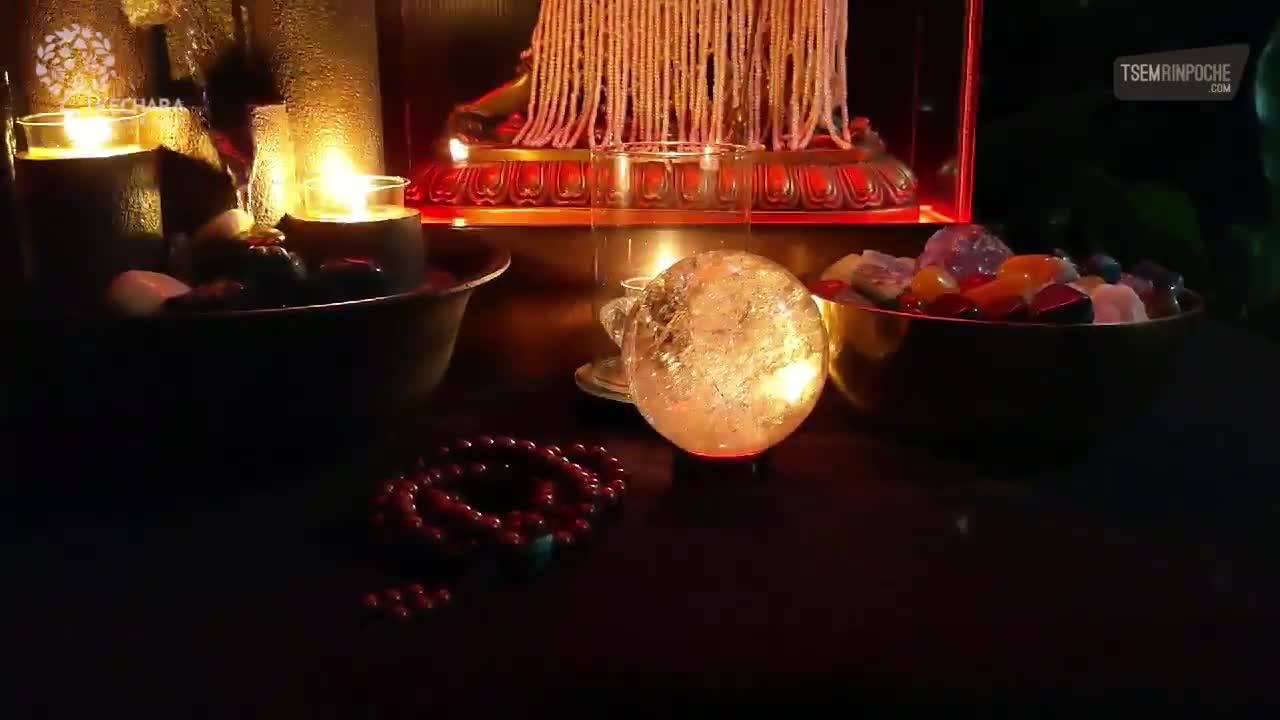

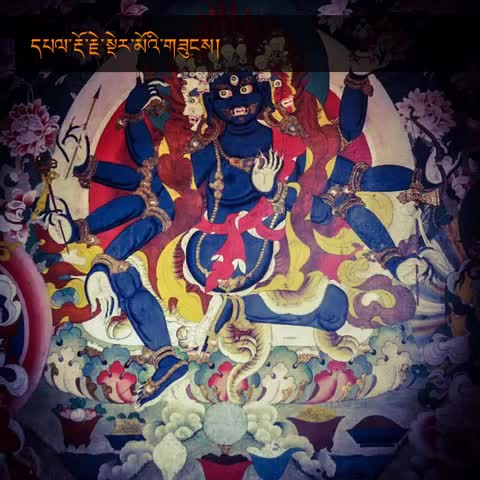
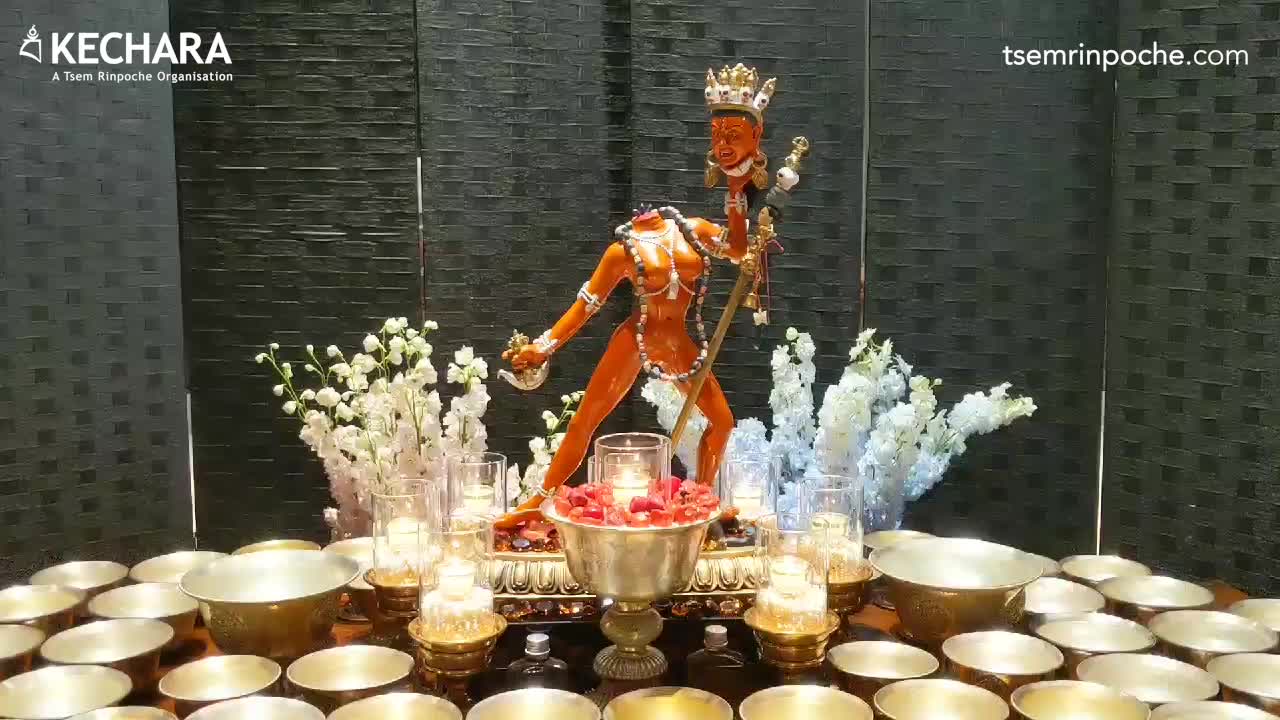




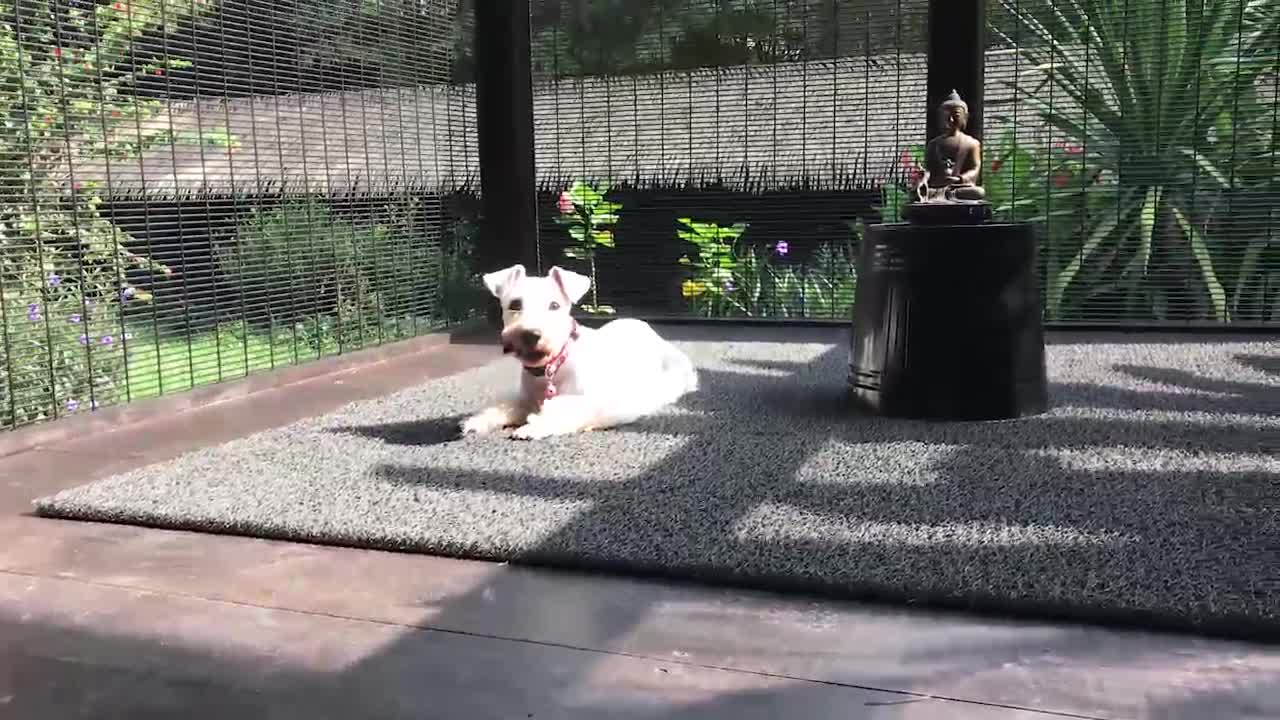




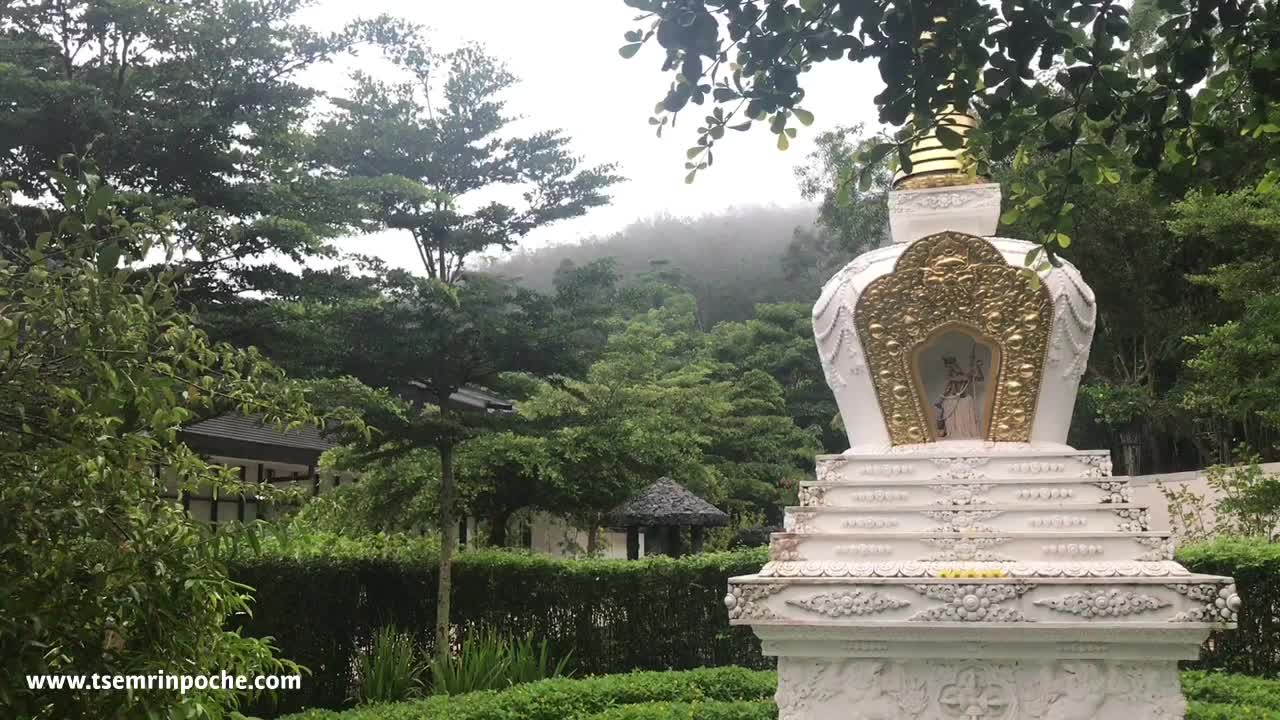



































































Starting on Vajra Yogini now. Practicing Vajra Yogini without initiation.
Find out more- https://bit.ly/2JjTTXp
https://video.tsemtulku.com/chat-videos/2019/04/chat-1554237623.mp4
Dear friends around the world,
Many people have asked how to connect with Sacred Diamond Dakini Vajra Yogini without initiation and formal commitments. I have explained how to do so here: https://bit.ly/2JjTTXp
Any form of Vajra Yogini you worship leads to the same benefit. All her forms are just her wisdom manifesting for different karmic propensities at different time periods.
Please be blessed with these beautiful pictures of Ucheyma (Severed Head Vajra Yogini) from my personal shrine. Read more on this sacred form.- https://bit.ly/2QghvhS
May you all be blessed and ascend to Kechara Paradise.
Humbly, Tsem Rinpoche
——————————————————————————
致世界各地的朋友:
人们曾无数次问我:如何在没有受灌顶和誓言的情况下,跟殊胜的金刚空行母——金刚瑜伽母结缘。我已经在此文中跟大家解释:https://bit.ly/2JjTTXp
不管我们供奉以哪种形象示现的金刚瑜伽母,所得的益处是一样的。她以无上智慧,顺应不同时代众生的业力而示现不同形象。
衷心希望我佛坛上的“乌切玛”(断首金刚瑜伽母)像的这些庄严相片能加持你的心续。更多关于这一殊胜法相的资料,可在此阅读:https://bit.ly/2QghvhS
祈愿你获得加持,日后能登克切拉净土。
詹杜固仁波切敬启
https://video.tsemtulku.com/videouploads/comment-1552837433.mp4
Dear friends around the world,
Many people have asked how to connect with Sacred Diamond Dakini Vajra Yogini without initiation and formal commitments. I have explained how to do so here: https://bit.ly/2JjTTXp
Any form of Vajra Yogini you worship leads to the same benefit. All her forms are just her wisdom manifesting for different karmic propensities at different time periods.
Please be blessed with these beautiful pictures of Ucheyma (Severed Head Vajra Yogini) from my personal shrine. Read more on this sacred form.- https://bit.ly/2QghvhS
May you all be blessed and ascend to Kechara Paradise.
Humbly, Tsem Rinpoche
——————————————————————————
致世界各地的朋友:
人们曾无数次问我:如何在没有受灌顶和誓言的情况下,跟殊胜的金刚空行母——金刚瑜伽母结缘。我已经在此文中跟大家解释:https://bit.ly/2JjTTXp
不管我们供奉以哪种形象示现的金刚瑜伽母,所得的益处是一样的。她以无上智慧,顺应不同时代众生的业力而示现不同形象。
衷心希望我佛坛上的“乌切玛”(断首金刚瑜伽母)像的这些庄严相片能加持你的心续。更多关于这一殊胜法相的资料,可在此阅读:https://bit.ly/2QghvhS
祈愿你获得加持,日后能登克切拉净土。
詹杜固仁波切敬启
The Library of Tibetan Works and Archives is in Dharamsala, which is broken into two parts. Upper Dharamsala is where the Dalai Lama’s palace is located with his audience room and main prayer hall. It is also the location of the Dialectics School, Gaden Shartse’s guesthouse, restaurants, tourist hotels, & main tourist areas.
A short ride down takes you to the lower part of Dharamsala where the Tibetan government is located. It is the location of the Tibetan Parliament in Exile, Nechung monastery, the Library of Tibetan Works and Archives, the Tibetan arts centre…it’s all in one area. And the reason why it’s split into upper and lower Dharamsala is because the area is mountainous.
The Library of Tibetan Works and Archives was established by the Dalai Lama and the Tibetan government to preserve all the ancient texts – both secular and spiritual – of Tibet and in the process, translate them into various languages like English. This book, Overview of Buddhist Tantra, by Panchen Sonam Drakpa was one of the books translated into English. What’s very interesting is that the book very clearly says that Panchen Sonam Drakpa’s previous life is Duldzin Drakpa Gyaltsen, one of the five main disciples of Lama Tsongkhapa. It also says that after that, he was Tulku Drakpa Gyaltsen.
So the book is basically saying that Tulku Drakpa Gyaltsen, Panchen Sonam Drakpa and Duldzin Drakpa Gyaltsen – the three Drakpas – are of the same mindstream.
Now that’s very peculiar because if Tulku Drakpa Gyaltsen’s previous life is Panchen Sonam Drakpa, the renowned composer of 45 volumes of Dharma texts, the abbot of three monasteries AND the 15th Gaden Tripa, the holder of Lama Tsongkhapa’s throne…if that’s the case, how can Panchen Sonam Drakpa take rebirth as Tulku Drakpa Gyaltsen and become an evil spirit and have a negative mind?
Prior to Tulku Drakpa Gyaltsen, he was Panchen Sonam Drakpa and before that, he was Duldzin Drakpa Gyaltsen, a heart disciple of Lama Tsongkhapa. How can a heart disciple of Lama Tsongkhapa reincarnate as the erudite master Panchen Sonam Drakpa, and then die and reincarnate as Tulku Drakpa Gyaltsen…and then Tulku Drakpa Gyaltsen, due to a bad and negative prayer, become the evil spirit Dorje Shugden? How is that possible? Logically, it’s not.
What’s incredible is that all of this was printed by the Library of Tibetan Works and Archives under the Dalai Lama’s guidance. They contradict themselves because on one hand, the Tibetan leaders say Dorje Shugden is an evil spirit. On the other hand they’re printing a book saying that Panchen Sonam Drakpa, whose later incarnation became Dorje Shugden, is of this illustrious mindstream.
So how can the Library of Tibetan Works and Archives, which is under the auspices of His Holiness the Dalai Lama and the Tibetan government, print the translation of a book composed by the previous incarnation of a so-called evil spirit? How can they then say in the book that Panchen Sonam Drakpa’s previous life is Duldzin Drakpa Gyaltsen, and his next life was Tulku Drakpa Gyaltsen?
Prior to the Dorje Shugden ban and controversy, everyone in Tibet knew that Dorje Shugden is Tulku Drakpa Gyaltsen, that Tulku Drakpa Gyaltsen is Panchen Sonam Drakpa, and that Panchen Sonam Drakpa is Duldzin Drakpa Gyaltsen. The three Drakpas, they are one mindstream emanating again and again to benefit other beings.
And as we all know, Tulku Drakpa Gyaltsen became Dorje Shugden so it totally doesn’t make sense to call him an evil spirit, then highlight all of his previous lives as erudite masters, and publish all of this information under their own library. So you can see the contradictions. You can read all of this for yourself in Overview of Buddhist Tantra, which was printed by the Library of Tibetan Works and Archives.
—–
OVERVIEW OF BUDDHIST TANTRA
GENERAL PRESENTATION OF THE CLASSES OF TANTRA,
CAPTIVATING THE MINDS OF THE FORTUNATE ONES
rgyud sde spyi’i rnam par bzhag pa
skal bzang gi yid ‘phrog ces bya ba bzhugs so
BY
PANCHEN SONAM DRAGPA
(Pan-chen bSod-nams grags-pa, 1478-1554)
O Choje Sonam Dragpa Pel! (Chos-rje bSod-nams grags-pa-dpal!)
In the vast expanse of Your bodhi-mind,
The mind that the Buddhas have lauded for as many as
one hundred times,
You have developed “merit” shining like the sun.
Through Your skill in learning, debate and writing,
As illuminating as one hundred thousand sun rays,
You have developed in You a complete knowledge of
the entire sutras and tantras,
Resembling a garden of flowers in full bloom.
The power of Your speech is like the sun;
The fame of your name has reached the three realms of
this world.
O Sonam Dragpa, the teacher of teachers!
I bow down at your feet.
In the vast garden of Your great teachings,
The intelligent young people gather for
The ‘six ultimates’ and the ‘four modes of transmission,’
Just as they are attracted to
The one hundred thousand types of nectar
Dripping from a flower of one hundred petals.
May I be able to experience
The taste of the secret tantra!
Panchen Choje Sonam Dragpa Pel (Panchen Chos-rje bSod-nams grags-pa-dpal), the holder of sutra and Vajrayana teachings, was a master whose outstanding learning and spiritual accomplishments are well known by all the learned ones in Tibet. His first incarnation came in the form of one of the five prestigious disciples of Lord Tsongkhapa (Tsong-kha-pa) and became known as Vinaya Holder (Dulzin) Dragpa Gyaltsen (Gragspa rgyal-mtshan). Then came Panchen Sonam Dragpa Pel (Panchen bSod-nams grags-pa-dpal), the author of the present text. The next was Nagri Tulku Dragpa Gyaltsen (mNga’-ris sPrul-sku Grags-pa rgyal-mtshan). In this way, a line of his incarnations, each with the Dragpa (gragspa) surname, followed successively.
Panchen Sonam Dragpa Pel (Panchen bSod-nams grags-pa-dpal) was born in the 14th century in Tsetang (rTsed-thang) in the Lhoka (Lho-kha) region of Central Tibet. He entered the great seat of learning, Sera Thekchenling (Se-ra theg-chen-gling) monastic university, where he became the personal disciple of spiritual master Donyo Dangden (Dhon-yod dang-ldan) and His Holiness the Second Dalai Lama Gedun Gyatso (dGe-‘dun rgya-mtsho). Under them, he studied the entire teachings of sutra, tantra and their commentaries, and became known for his outstanding learning. He also received from them the empowerments, reading transmissions, guides and instructions of the entire body of spiritual training. On becoming the fully blessed one, the Dalai Lama appointed him the abbot of the Loseling (Blo-gsalgling) college, one of the four colleges of Drepung (‘Bras-dpung)- the most prestigious monastic university in Tibet before 1959, with over 10,000 monks on its register. He continued to be the abbot of this college for the next six years; and after him the tenure for each of his successors in this position was fixed for a period of six years, a rule that is followed even today.
He was then appointed the head of the Gelugpa (dGe-lugs-pa) order, the throne holder of Gaden (dGa’-ldan), thus becoming the 15th regent of Lord Tsongkhapa (Tsong-khapa), the second Buddha. In his eulogy to him, Khedrub Gelek Pelsang (mKhas-grub dGe-legs dpal- bzang) says:
O Lama, the second successor of the Unsubduable One,
The regent of the Lord of Dharma,
You are the one who made the virtuous qualities thrive;
You are the one who ascended to the golden throne uplifted
by the fearless lions.
May Your success thrive forever!
He continued to be the throne holder for the next seven years, during which time he promoted the spread of Lord Tsongkhapa’s (Tsong-kha-pa) precious teachings, the Gelug (dGe-lugs) tradition, across the land in all directions. He also paid special attention to the practice of monastic rules and the learning and meditation of Buddhism in the monasteries such as Sera (Se-ra), Drepung (‘Bras-spungs), Kyomolung (sKyo-mo-lung), Phagmo Chode (Phag-mo chos-sde), Nyeding (Nye-sdings), Ödna (’Od-sna) and Chöde Rinchen (Chos-sde rin-chen) etc. and improved them to a great extent. He taught the Third Dalai Lama Sonam Gyatso (bSod-nams rGya-mtsho) as the latter’s spiritual master. It was from him that the Dalai Lama received the name Sonam (bSod-nams).
His contributions in the literary field are enormous; and, indeed, they are the most valuable of all his contributions. Tsongkhapa (Tsong-kha-pa) has rightly said:
Of all one’s deeds,
The ‘deeds of speech’ are the most valuable.
Panchen Sonam Dragpa Pel (Panchen bSod-nams grags-pa-dpal) was a person with an extraordinary talent for teaching, debate and writing. In his colophon to Bu mey chi don zab don sel wey dron mey (dBu ma’i spyi don zab don gsal ba’i sgron me), he wrote:
In the field of teaching, I am [next to none!] Knowing that
I would outdo them in this field, Arya Asanga and his
brother transmigrated into another realm.
In the field of debate, I am [next to none!] Knowing that
I would find out the areas they had contradicted and
that I would examine them and put forth my arguments,
the logician Dignaga (Digh-naga) and Dharmakirti tactfully
bypassed me.
In the field of writing, I am [next to none!] [In my eyes,]
Arya-sura was just good at spreading the works, which
are like ‘disputes~ between an insect and a field.’
I am the learned man. Peerless in the field of teaching,
debate and writing!
For some this passage might sound utterly nonsensical, but the most learned master of our age, the talented teacher, logician and writer, the late tutor to His Holiness the Dalai Lama, Yongdzin Trijang Dorjechang (Yongs-‘dzin Khri-byang rDorje-‘Chang), said: “Now, some people of our time, who consider themselves learned scholars, think that this is utter nonsense; but they are wrong.”
Panchen Sonam Dragpa Pel (Panchen bSod-nams grags-pa-dpal) wrote over 45 volumes of books dealing with many different subjects, such as the commentaries on the sutras and tantras, the saddhana manuals of the tutelary deities, history, religious history and so forth. Among these, one that is very important for all who wish to learn and meditate on the path-of the practical aspect of Buddhism in general and that of Vajrayana in particular is the Leg shey gyu de chi nam par shagpa kelsang gi yi trod (Legs bshad rgyud sde spyi’i rnam par bzhag pa skal bzang gi yid ‘phrod). In this book, he has explained precisely how the four tantras differ from one another. He has also fully described the stages of the two spontaneous path practices of the Vajrayana tradition, dealing with the ‘six ultimates’ and the ‘four modes of transmission’, thus interpreting without mistake the intention of Adhi-Buddha Vajradhara.
May the reprint of this text, which the Library of Tibetan Works and Archives is publishing herewith, bring peace and happiness in this world!
Prof. Nawang Jinpa
St. Joseph’s College
Darjeeling
January 24 1996
All enlightened beings are worthy of homage and worship. They are the best beings to take refuge in and we should offer them our prayers as we can put our full confidence in them. Of all the Buddhas and Bodhisattvas, I personally find that Manjushri is extremely important. This is because what keeps us in samsara (cyclic rebirth) is our total ignorance and misunderstanding of the reality of existence. What is necessary to penetrate this deep ignorance that keeps us bound in a perpetual state of reincarnation is wisdom. We need many types of wisdom which can be acquired by relying on Manjushri as our yidam (meditational deity). By focusing on his meditation, practice, mantra and path we can gain wisdom in order to have the tool to penetrate the reality of existence. Therefore, Manjushri is an extremely important Buddha for us to focus on and take refuge in.
Tsem Rinpoche
(Photograph: this is the beautiful outdoor Manjushri statue who is in a teaching pose. He is floating above a koi fish pond nestled among lush greenery in Kechara Forest Retreat, Malaysia)
每一位觉者都能成为我们朝拜、膜拜的对象。他们是我们至高、至好的皈依,我们应该向他们做祈请,并且对他们生起全然的信念。在众佛菩萨之中,我个人认为文殊菩萨极为重要。这是因为使我们身陷娑婆(轮回)的是我们自身的无明,以及对实相的曲解。智慧是一种必要,它能穿透我们深不见底的无明,那个使我们受困于无止境投生的无明。我们需要多种智慧,而依止文殊菩萨作为我们的本尊,即能使我们成就多种智慧。透过文殊菩萨的观想、修持法门、心咒及修行道路,我们能成就智慧,拥有了知实相的“器具”。故此,专注于文殊菩萨的修持法门、皈依他,对我们而言都极为重要。
詹杜固仁波切
(相片:这尊户外文殊菩萨像呈转法轮姿。他被茂密的草木环绕,安坐在马来西亚克切拉禅修林的鱼池之上。)
A sacred image of the rare form of Vajrayogini known as Ucheyma, the Buddha that shows us the path to eradicate the ego. For this and many other high-resolution images of the enlightened beings to download for free visit: https://bit.ly/2oxb4qU
Ucheyma (Severed Headed Vajrayogini) (Main figure)
(Top to bottom): H.H. the 7th Panchen Lama, Ucheyma (Severed Headed Vajrayogini), Vajra Varnani (green assistant), Vajra Vairocani (yellow assistant), Dorje Shugden and Citipati.
The central deity is known as Chinnamasta or Dorje Neljorma Ucheyma. Both Chinnamasta (Sanskrit) and Ucheyma (Tibetan) literally mean, ‘She Whose Head is Severed’. The meaning behind her form is to show practitioners that they need to completely remove the grasping and self-identification with the “I” or the ego. Generally, the identity of the self is strongly associated with our face more than any other part of our body. We usually recognise a person when we look at a person’s face. Hence, our self-identification or ego is strongly associated with our face. To show us that this self-identification needs to be overcome on the spiritual path to enlightenment, Vajrayogini uses her ritual chopper to decapitate herself. This is symbolic of her practice eradicating the ego.
The Severed Headed Vajrayogini, as she is also known, removes all afflictive mental constructs by removing the root cause – the identification of the self, the ego. We are either attached to or averse to people and circumstances because we have an ego to please, gratify and protect. But in the grander scheme of things, this self-identification with the ‘I’ is illusory and does not really exist. Therefore, Vajrayogini reveals this ultimate truth through the dramatic decapitation of her head and at the same time is still able to live and function. She is able to live due to her direct perception of emptiness and egolessness.
Contrary to what some people might think, the eradication of the self does not destroy individualism, our personality or make us into a mindless person. In fact, the eradication of the ego makes us become a vibrant and compassionate person, someone that has greater awareness of the suffering of others. In other words, we become much warmer, kinder, forgiving, tolerant, conscientious, generous, contemplative and we are become a joy to be with. The cutting of the ego or the ‘I’ brings us towards awakening our true self, the Buddha nature within.
The Severed Headed Vajrayogini has two dakini attendants. From the trunk of her neck, there are three severed blood vessels spurting three jets of blood that flow into the mouths of her own decapitated head that she carries in her left hand and into the mouths of her two attendants. Tsem Rinpoche explained that the three jets of blood represent that her practice purifies the three psychic poisons of ignorance, hatred and desire. In turn, this leads to the attainment of the three bodies of a Buddha – the emanation body, the enjoyment body and the truth body. In other words, the severance of the ego via her tantric path leads to the purification of all delusions and ultimately, the attainment of Buddhahood itself.
The 7th Panchen Lama, Palden Tenpai Nyima is featured floating above because of his compilation of sadhanas from the ancient Sadhanamala texts. This includes a particular sadhana or collection of prayers, visualisation and mantra focused on Ucheyma. Incidentally, Dorje Shugden in many of his previous lives was a lineage master of the Vajrayogini tantras as well. These previous lives include the likes of the Mahasiddha Naropa and Tsarchen Losel Gyatso. The Lord and Lady of the Charnel Ground, known as Citipati, are one of the main protectors of the Vajrayogini Tantra.
Last of all, the ascetic meditator engaging in his devotional practices towards Ucheyma in the cemetery represents the ideal environment for tantric practice because such environments invoke deep renunciation towards worldly affairs and attachments. All Buddhist traditions advocate meditating on the bones of the deceased because it reminds us of our mortality and hence, we develop revulsion towards the transient nature of worldly or ordinary existence.
More free downloads: https://bit.ly/2oxb4qU
Read more about Vajrayogini: https://bit.ly/2iVLCuG
Ucheyma (Severed Headed Vajrayogini) (Main figure)
(Top to bottom): Maitri Kacho (Flying Vajrayogini), Maitri Kacho (One-Leg Up Vajrayogini), Naro Kacho, Sukhasiddhi, Ucheyma (Severed Headed Vajrayogini), Vajra Varnani (green assistant), Vajra Vairocani (yellow assistant), Citipati, Vajravarahi and Dorje Shugden.
The central deity is known as Severed Headed Vajrayogini, Chinnamasta or Dorje Neljorma Ucheyma. Both Chinnamasta (Sanskrit) and Ucheyma (Tibetan) literally mean, ‘She Whose Head is Severed’. The meaning behind her form is to show practitioners that they need to completely remove the grasping and self-identification with the “I” or the ego. Generally, the identity of the self is strongly associated with our face more than any other part of our body. We usually recognise a person when we look at a person’s face. Hence, our self-identification or ego is strongly associated with our face. To show us that this self-identification needs to be overcome on the spiritual path to enlightenment, Vajrayogini uses her ritual chopper to decapitate herself. This is symbolic of her practice eradicating the ego.
The Severed Headed Vajrayogini removes all afflictive mental constructs by removing the root cause – the identification of the self, the ego. We are either attached to or averse to people and circumstances because we have an ego to please, gratify and protect. But in the grander scheme of things, this self-identification with the ‘I’ is illusory and does not really exist. Therefore, Vajrayogini reveals this ultimate truth through the dramatic decapitation of her head and at the same time is still able to live and function. She is able to live due to her direct perception of emptiness and egolessness.
Contrary to what some people might think, the eradication of the self does not destroy individualism, our personality or make us into a mindless person. In fact, the eradication of the ego makes us become a vibrant and compassionate person, someone that has greater awareness of the suffering of others. In other words, we become much warmer, kinder, forgiving, tolerant, conscientious, generous, contemplative and we are become a joy to be with. The cutting of the ego or the ‘I’ brings us towards awakening our true self, the Buddha nature within.
The Severed Headed Vajrayogini has two dakini attendants. From the trunk of her neck, there are three severed blood vessels spurting three jets of blood that flow into the mouths of her own decapitated head that she carries in her left hand and into the mouths of her two attendants. Tsem Rinpoche explained that the three jets of blood represent that her practice purifies the three psychic poisons of ignorance, hatred and desire. In turn, this leads to the attainment of the three bodies of a Buddha – the emanation body, the enjoyment body and the truth body. In other words, the severance of the ego via her tantric path leads to the purification of all delusions and ultimately, the attainment of Buddhahood itself.
Severed Headed Vajrayogini is surrounded by some of her other forms, including Naro Kacho, two forms of Maitri Kacho, Sukhasiddhi and Vajravarahi. These forms of Vajrayogini are more commonly practised compared to Severed Headed Vajrayogini and are prevalent in most Tibetan Buddhist lineages. Though they may look different, all forms are indivisible from her true nature and all her practices can lead practitioners to enlightenment. Naro Kacho arose from a vision beheld by the Mahasiddha Naropa, Maitri Kacho from a vision beheld by Maitripa, and Indra Kacho from a vision beheld by Indrabodhi. The Lord and Lady of the Charnel Ground, known as Citipati, are one of the main protectors of the Vajrayogini Tantra.
Last of all, Dorje Shugden is a protector with special affinity with Vajrayogini practitioners because he arose from an incarnation lineage that includes Naropa and Tsarchen Losel Gyatso who practised and proliferated her Tantra.
More free downloads: https://bit.ly/2oxb4qU
Read more about Vajrayogini: https://bit.ly/2iVLCuG
Vajrayogini (Main figure)
(Top to bottom): Naropa, Vajradharma, Hero Vajradharma, Naro Kacho, Maitri Kacho (Flying Vajrayogini), Dorje Shugden and Vajravarahi.
Vajrayogini is a female tantric Buddha and she has many forms that are derived from various lineages. She mainly embodies the fully enlightened female (shakti) aspect of a Buddha. She belongs to the Mother Tantra classification, which refers to her practice concentrating on the wisdom aspect of the path to Buddhahood. She is also the principal dakini, the compassionate female guides and nurturers of tantric meditation who lead practitioners to enlightenment. In the thangka, the main figure in the middle is Naro Kechari as she arose from the pure vision of the Mahasiddha Naropa.
In Anuttara (Highest) Yoga Tantra, principal dakinis normally appear in union with a male consort and this can be seen in the cases of deities such as Guhyasamaja, Hevajra, and Kalachakra. In the case of Vajrayogini, she is the principal female Buddha of the Chakrasamvara Tantra and therefore, she is normally in union with Heruka Chakrasamvara. Furthermore, Vajrayogini is also considered a Vajradakini, who are yidams or meditational deities in their own right. Their practices have evolved from the main practices of their consorts, simplifying the otherwise complicated original practice by reducing it to a single-deity meditation without sacrificing the main benefits and features of the original. Hence, Vajradakini practices such as Vajrayogini and Nairatmya are derived from the original Chakrasamvara Tantra and Hevajra Tantra respectively.
In essence, Vajrayogini is known as “Sarvabuddha-dakini” or the Dakini Who is the Essence of all Buddhas. Her mantra is known as the King of All Mantras as it has the most powerful ability to bless us with spiritual attainments even without any visualisation or meditation. There are 11 Yogas in the generation stage of her practice and a few which have the power of transforming ordinary actions like sleeping, waking and ordinary daily tasks into a collection of merits. Ultimately, her Tantra offers salvation for ordinary practitioners at death with her special promise of guiding practitioners towards Kechara, or the Paradise of the Dakinis, in which we can continue deep practices to become a Buddha without fear, obstacles and interruptions.
Within Vajrayogini practice, soliciting the blessings of the lama and the lineage master are of paramount importance in order for our practice to bear results. Hence, the lama is visualised as the red Vajradharma with arms crossed at the heart, holding the vajra and bell. The lineage masters are visualised as Hero Vajradharma, holding a damaru and skullcup while cradling a khatvanga. Aside from the main Naro Kechari form, Vajrayogini also appears in the form of Maitri Kechari, who is known as Flying Vajrayogini, and arose from the vision of Maitripa. Another common form is known as Indra Kechari, or Vajravarahi, who arose from the vision of Indrabodhi.
Last of all, Dorje Shugden is a Dharma protector with a special affinity with Vajrayogini practitioners. This is because he himself arose from an incarnation lineage that includes the likes of Naropa, the progenitor of Naro Kechari practice, and Tsarchen Losel Gyatso who had practised and proliferated her Tantra and is listed as one the lineage masters invoked upon every day by Vajrayogini practitioners.
More free downloads: https://bit.ly/2oxb4qU
Read more about Vajrayogini: https://bit.ly/2iVLCuG
Original illustration and text posted by Eric D Hatchell as a reply to H.E. Tsem Tulku Rinpoche’s facebook post on Vajrayogini here: http://bit.ly/VYogini0001
The Dākiṇī with the Essence of all Buddhas, Vajrayoginī
Her practice includes methods to end the otherwise repetitive states of Bardo and rebirth, by transforming the process into a journey, which may lead to full enlightenment. In preparation for which, Vajrayoginī further offers the omnipresent ability to reconstruct the nature of the most, mundane everyday experiences, such that they may reveal higher destinations, via the spiritual paths she may choose to reveal. [1] Vajrayoginī being defined as, “The Dākiṇī who is the Essence of all Buddhas”, [2] is amplified by scholar Miranda Shaw when she implied that this deity is no less than, the supreme nature of the very Tantric pantheon. No male Buddha, including her divine consort, Heruka-Cakrasaṃvara, further advances her in metaphysical implications. [3]
Vajrayoginī’s sādhanā originates from India circa 10/12th C, [4] when summoned as Heruka-Cakrasaṃvara’s Yab-Yum consort [5], with later forms including Vajrayoginī as “Solitary Hero”, she may be visualized with the deep red complexion of a 16-year-old female, whose stance is nude amidst a blazing fire of pristine awareness and most exalted wisdom. Her head is adorned with a crown of five skulls and upon her forehead, the third eye of wisdom is set vertically (represented here by an auspicious jewel). She drapes a necklace of fifty dried human skulls and is depicted with her traditional vajra-handled knife in her right hand; with a blood filled kapala in her left, she drinks with upturned head while looking above, toward the pure realm of Khechara. This seemingly gruesome gesture is actually symbolic of her clear light in great joy, known as “mahasukha” (the great bliss), [6] [7] thus the blood she drinks may be offered to us all as if a fine wine.
Resting on the left shoulder is a Katvanga staff as she stands tall with her two feet, trampling the bodies of red Kalaratri and black Bhairava (with heads bending backward), representing the embodiment of illusion and ego-awareness. The composition, all of which rests above a sun disc and multicolored lotus pedestal, she is rendered here after a thankga of Naropa Tradition (passed down from a special teaching of the Indian Mahasiddha Naropa). Vajrayoginī herself may be classified as the personification of “Wisdom” or “Mother” and her practice originates with the Chakrasamvara Cycle of Tantras, which is one of the five principal tantric practices of the Sakya School, although found in one form or another, she is included in all schools of Tibetan Buddhism. [8]
Vajrayoginī also appears in versions from the Kagyu school of Tibetan Buddhism, with one popular system having the practitioner visualize themselves as Vajrayoginī, as such, their guru taking the form of Milarepa. [9] Thus depicted above the central deity here we see Milarepa on our right, with his great Guru Marpa left (whose guru was Naropa himself, and other great Indian masters). [10]
Vajrayoginī is a simplified, single most form of the female Buddha, who is otherwise a collection of alternate forms. From her sādhanās she is visualized in English terms as “Vajra Sow”, “Wrathful Lady”, “Fierce Black One”, and other such similar manifestations of female energy found in numerous iconographic renderings and traditions. Each feature of Vajrayoginī’s visualization conveys important spiritual concept. For example, her three eyes indicate her ability to see all (past, present and future); her red-colored body symbolizes the blazing of her ”inner fire”, and the curved knife she wields, demonstrates the power to sever the delusions and obstacles of her followers and of all living beings. [11]
—–
Wordmarque Design and Photography
—–
References:
[1] Gyatso, Kelsang. Guide to Dakini Land: The Highest Yoga Tantra Practice of Buddha Vajrayogini. London: Tharpa, 1996, p.xii.
[2] “The Berzin Archives.” Bonding Practices for Mother Tantra. Accessed February 18, 2016. http://www.berzinarchives.com/…/bonding_prac_mother_tantra_….
[3] Shaw, Miranda Eberle. Buddhist Goddesses of India. Princeton: Princeton University Press, 2006, p. 8.
[4] English, Elizabeth. Vajrayoginī: Her Visualizations, Rituals & Forms: A Study of the Cult of Vajrayoginī in India. Boston: Wisdom Publications, 2002.
[5] “Vajrasattva (Buddhist Deity) – White (with Consort).” Vajrasattva (Buddhist Deity). Accessed February 18, 2016. http://www.himalayanart.org/items/77598.
[6] Gyatso, Kelsang. Guide to Dakini Land: The Highest Yoga Tantra Practice of Buddha Vajrayogini. London: Tharpa, 1996 p. 123-127.
[7] Glenn H. Mullin
[8] “Item: Vajrayogini (Buddhist Deity) – (Naropa Tradition).” Vajrayogini (Buddhist Deity). Accessed February 18, 2016. http://www.himalayanart.org/items/290.
[9] English, Elizabeth. Vajrayoginī: Her Visualizations, Rituals & Forms: A Study of the Cult of Vajrayoginī in India. Boston: Wisdom Publications, 2002, p. xxiii.
[10] Drinking the Mountain Stream: Songs of Tibet’s Beloved Saint, Milarepa … by Mi-la-ras-pa, Rinpoche Lama Kunga, Brian Cutillo, p.305.
[11] Gyatso, Kelsang. Guide to Dakini Land: The Highest Yoga Tantra Practice of Buddha Vajrayogini. London: Tharpa, 1996, p.123-127.
My utmost thanks to u for Sony he knowhow on tulips n naropa.
All the best on your efforts !
Mangalhosh !
For more free high resolution images of Vajrayogini, visit: https://www.tsemrinpoche.com/tsem-tulku-rinpoche/downloads/buddha-images.html?nggpage=9
Medicine Buddha puja encourages healing of all levels – physical, mental and emotional healing for those in need.
High resolution file of this thangka is available for download for all dharma practitioners around the world and for those who just want sacred images in their environment. Enjoy, be blessed and share this with others.
Here is the link to free download of this image and many other images: https://www.tsemrinpoche.com/tsem-tulku-rinpoche/downloads/buddha-images.html?nggpage=7
This is my beautiful Bodhgaya Vajra Yogini on my personal altar. May you be blessed by her always. Read about her here https://bit.ly/2AfEK4Q
Tsem Rinpoche
Listening to the chanting of sacred words, melodies, mantras, sutras and prayers has a very powerful healing effect on our outer and inner environments. It clears the chakras, spiritual toxins, the paths where our ‘chi’ travels within our bodies for health as well as for clearing the mind. It is soothing and relaxing but at the same time invigorates us with positive energy. The sacred sounds invite positive beings to inhabit our environment, expels negative beings and brings the sound of growth to the land, animals, water and plants. Sacred chants bless all living beings on our land as well as inanimate objects. Do download and play while in traffic to relax, when you are about to sleep, during meditation, during stress or just anytime. Great to play for animals and children. Share with friends the blessing of a full Dorje Shugden puja performed at Kechara Forest Retreat by our puja department for the benefit of others. Tsem Rinpoche
Listen here: https://www.youtube.com/watch?v=ZbzgskLKxT8&t=5821s
The current form of Naro Kacho Vajra Yogini appeared to the Indian Mahasiddha Naropa after he meditated intensely on her practice inside a cave. He beheld her glorious form in a vision. This unique form became known as Naropa’s Vajra Yogini or Naro Kacho, as it had never existed before. Later, in Tibet, His Holiness Kyabje Pabongka Rinpoche also had visions of Vajra Yogini. His vision differed slightly from the vision of her that Naropa beheld. In the original Naro Kacho form, Vajra Yogini looks towards her pure land named Kechara. However in Kyabje Pabongka Rinpoche’s vision, she looked straight at him, symbolic of the deity empowering him to bestow her practice to many people in order to benefit them. The practice of Vajra Yogini belongs to the Highest Yoga Tantra classification that leads to tremendous inner transformation and can even grant enlightenment within just one lifetime.
Video of Tsem Rinpoche’s shrine taken July 16, 2018. Very beautiful, well done and meticulous.
https://www.youtube.com/watch?v=LPAfpMoN2bA
Video of Tsem Rinpoche’s shrine taken July 16, 2018.
Very beautiful, well done and meticulous.
https://video.tsemtulku.com/chat-videos/chat-1531752637.mp4
Vajra Yogini has many different forms and in each of these forms, the positioning of her sacred body, the various implements she holds and the expressions on her face have profound meaning into various aspects of enlightenment. The implements she holds, the expressions on her face, and her body symbolise specific aspects of enlightenment that suit people during a particular time and place according to their karma. So, therefore, Vajra Yogini’s pose, forms and emanations change over time in order to suit different karmically-connected practitioners. It will keep changing because enlightenment is fluid, compassionate and skilful. To gaze upon Vajra Yogini is to look at a complete ‘roadmap’ to enlightenment as every aspect of her body is a manifestation of enlightenment. Therefore to have her form, picture, painting or statue is very blessed. We should make offerings to her daily diligently.
After the great Mahasiddha Naropa had served his guru the Mahasiddha Tilopa for 12 years, Tilopa conferred the Vajra Varahi (another form of Vajra Yogini) initiation with full instructions unto Naropa. Then, Naropa diligently meditated on Vajra Varahi and had a vision of her, and when she appeared to him directly, she appeared in the form of Vajra Yogini. Normally, when he engaged in the Vajra Yogini (Vajravarahi) practice, she was in the form of facing him directly, holding a skull cup and a curved flaying knife in front of her heart. One leg was up and one leg was down as in a dancing pose. That was the form of Vajra Yogini that he had meditated on to gain the highest attainments.
After he had meditated on Vajra Varahi and gained visions of her, she appeared to him in a different form, with her face looking up at Kechara Paradise instead of facing him directly. Her left hand holding the skullcup was thrust in the air and her right hand holding the curved flaying knife, also known as a cemetery knife was facing down at sentient beings or samsara to help beings cut their bonds to suffering. Her left leg was bent, and her right extended while standing in a pose of looking towards Kechara Paradise like she is about to take off there. This form signifies she will take you there and out of suffering. That form of Vajra Yogini became special and that was called Naro Kacho or the Vajra Yogini of Naropa. This Naropa’s Vajra Yogini was initiated to the Nepalese Pamtingpa brothers and they meditated diligently and this tradition of Naropa’s Vajra Yogini just became prevalent and took off from there. Naropa started initiating his other disciples as well into this special form of Vajra Yogini and she became known as Naropa’s Vajra Yogini till this day and it is considered a highly blessed lineage. That is the lineage we have now and most prevalent.
She is looking up because this Naropa’s Vajra Yogini is indicating she will lead her practitioners to her Kechara Paradise within one lifetime if you are diligent in her practice. Realizing enlightenment is harder for people in today’s world and needs more time during Kaliyuga degenerate period, she leads you to her paradise where you can practice undisturbed to Buddha-hood.
In this brilliant artwork, what you see is the Mahasiddha Naropa having a direct vision of Vajra Yogini. It’s the first time she has appeared to Naropa in this form. This form is associated with Naropa. Prior to Naropa, this form of Vajra Yogini did not exist. She in this vision is initiating him into this form (Naro Kacho) of herself indicating this form will be most efficacious now according to our karmic period. In the background, you will see a cave with a light in it because when Naropa used to meditate in that cave, it is said that from his body would emit a light and people could see it from afar. You can also see animals surrounding Vajra Yogini, they can feel her compassion and her great blessings and they are at peace around her.
Vajra Yogini brings peace, love, compassion, wisdom and freedom to everyone who practices her incredibly powerful tantra. Therefore, this artwork is a very beautiful representation of the time when Naropa had a vision of Vajra Yogini in this form for the first time and it is now known as Naropa’s Vajra Yogini. This artwork was offered to me as a gift from a very talented artist. I deeply appreciate this piece of visual spirituality very much.
Tsem Rinpoche
To download for your shrine, please click here: https://www.tsemrinpoche.com/?p=62528
your kind informations about Naropa is great.
kindly please write about Guru Padmasambhava also.thanks.
The story of Naropa and his Guru, Tilopa is in itself many lessons for a Buddhist practitioner.
Being a “learned” student of the Dharma whose knowledge was unbeatable in a great debate with both Hindu and Buddhist scholars, Naropa still was not able to attain enlightenment until a vision of Vajrayogini told him to seek his Guru.
Naropa’s quest for his Guru, Tilopa and the training he followed with complete trust and faith is the epitome of “Guru-Student” relationship and Guru Devotion.
Naropa’s renunciation of both materialistic wealth and status together with his willingness to obey his Guru’s instructions without doubts were the essence for his success.
In trusting to abide his Guru’s instructions, Naropa suffered much physical damage to his body of which he was healed instantaneously by his Guru. It is the practice of the very tenets of Guru devotion that his learning of the Dharma served him to enlightenment in his lifetime.
As Rinpoche has always taught us, it is both information and teachings received and the practise that will create wisdom for us to carry on with our spiritual journey,
Indeed an inspiring story for us to ponder and realise the importance of our Guru to us.
Mahasiddha Naropa’s birth was similar to many great sages such as Atisha and Buddha Shakyamuni . It was a privileged one but wealth and privilege did not interest him.
Having a perfect wife and family was not his aim either.
Learning the Dharma was all he wanted to do in life, and he knew this from a very young age. Well, he did become the best Buddhist scholar in the country….but that did not confer him Enlightment either.
Following that, the journey was mostly focused on purifying his karma, obscurations and ego. The feats he went through (based on this generation’s level of “acceptance”/perception)(with all due respect) would seem incorrect or even downright silly ! This opinion of mine probably stem from my own negative karma, dualistic views and ego.
Mahasiddha Naropa was definitely a courageous being and his principles were pitted against overwhelming odds. He is obviously no ordinary being to have been able to go through all the trials and tribulations to reach the ultimate goal of Enlightment. Clearly, the main potent essence that propelled him to succeed was through his pure Guru devotion. His life and journey is one that sets as a clear example to all practitioners as to what one should endure to get to the ultimate goal. The trials and tribulations may be different for every being, but the fact lies in that to escape samsara the journey would be no easy task !
To sum it all, just having theoretical knowledge on Buddhism alone is insufficient to bring one to Enlightment. One can only be Enlightened with the love and guidance of a real Guru who has the wisdom and compassion to lead one there.
With folded hand my deep gratitude to Rinpoche for sharing this story. Thank you Pastor David.
Thank you Rinpoche and Pastor David Lai for writing and sharing the story of Mahasiddha Naropa, which can serve as an inspiration for us to learn about pure Dharma practice and how to obey and follow our Guru’s instruction. Upon reading and contemplating on this article, I have learnt that whoever gives me hard times and so called ‘problems’ without the slighted reason, I shall visualize that person as Tilopa and I shall take the opportunity to apply Dharma practice and smoothen out the situation peacefully without holding grudges. Although it is easier to say than being done, we should practise with our effort until we are one with Dharma.
Based on my understanding from the The Twelve Minor Trials when Naropa in search of His Guru Tilopa, we should not turn our Dharma pursuits and learning into negative and egoistic thoughts that can lead us into selfish acts with bad karma accumulated, no matter how difficult the situation would be. When Naropa came to meet with The Twelve Major Trials while following Tilopa initially, Naropa learnt the Dharma through the difficult physical ways, which were full of sufferings and possible His life will be taken away after each time Naropa listened and followed Naropa’s instruction 100% effortlessly. The story of Mahasiddha Naropa can always become our reminder whenever we have any inner obstacles and obscurations such as egoistic mind, laziness, anger, selfish mind, and other forms of negativity when we learn and practice the Dharma according to the teachings and instructions given by our Guru.
May all sentient beings able to meet with Dharma teachings and practise the Dharma purely until samsara ends.
Thank you with folded hands,
kin hoe
谢谢仁波切和黎国圆讲法师的分享。
那洛巴是佛教的84大成就者之一。 他的成就和上师依止到现在还是被世人津津乐道的事情。
看过这篇文章我们可以看到那洛巴在修行的路上一点都不简单。 他经过他上师帝洛巴所给予的无数试炼。 以现今的角度来说, 跳入火、把自己的血肉当成曼达拉来供养给上师都是现在不可能做到的事情。 不过当然这里的重点是上师依止心, 我们需要对上师拥有100%的信心, 那么我们的佛法修持才会有成就。 当然现在也已经是末法时期, 或许在方法上也会根据时代做出一些调整。
那洛巴其中一个很大的成就就是亲见金刚瑜伽母, 并把金刚瑜伽母法门流传到现在。 金刚瑜伽母是无上瑜伽密续胜乐金刚密续的浓缩版, 而胜乐金刚密续则是唯一一个密续是不会经过时代的演变而减少加持力的。所以这个密续非常适合身在末法时期的我们。
其实当时帝洛巴是传授金刚亥母法门于那洛巴。 那洛巴经过半年的修持已得到成就、达到证悟, 并在禅定中看到金刚瑜伽母示现我们所看到的双脚着地的形态。 过后此金刚瑜伽母形态也被称为那洛空行母。 根据上师詹杜固仁波切所说, 金刚亥母法门主要是让我们在这世界直接即身成佛。 不过由于末法时期众生功德不足, 不容易达到即身成佛, 所以金刚瑜伽母特别示现这个形态给身在末法时期的我们。金刚瑜伽母法门可以让我们投生在她的净土—克切拉净土。 金刚瑜伽母的心咒也被称为咒中之王, 如果得到她的灌顶、并守着所有戒律, 单单持诵她的心咒都可以得到成就。
如果想了解金刚瑜伽母法门, 可看看: https://www.tsemrinpoche.com/tsem-tulku-rinpoche/category/vajra-yogini
谢谢
Thanks for this interesting background of Naropa. Despite all the horrible training by Tilopa, never once Naropa gave up but his faith to Tilopa grew even more. In this modern days or rather degenerated era, with all the delusions/doubts that clouded our mind, do we have the merits to see our guru as a pure being and follow through whatever instructions are given? For example to pass the twelve major trials like how Naropa did.
Do we jump off the multi-storeyed building to show guru devotion? And there was this incident that Naropa refused to eat the fish and frogs served to him by an old man because he didn’t eat meat and it was against his vows to have evening meals. Later he was admonished for not consuming the meat due to habit-forming thoughts and craving after attachments instead. This puzzled me for quite a bit, aren’t we supposed to keep our vows and why does Naropa’s action “accused” as craving after attachment? Or we should not take the contents written here literally but be inspired by Naropa’s devotion?
Born as a Bengali prince named Samantabhadra, Naropa a rebellious child goes against his royal training. Naropa set out to the East to search for a teacher . He did eventually meet Tilopa and was put to twelve hard tests before been accepted . Naropa was one of the most prominent and authoritative Indian mahasiddhas . He received all the lineage teachings from his guru Tilopa and later transmitted them to his disciple. I do enjoyed reading those interesting stories about Mahasiddha Naropa’s spiritual journey.
Thank you Rinpoche and Pastor David, for this inspiring sharing on the great Mahasiddha Naropa and those beautiful images of Naropa, in the photo gallery .
Last Saturday, at an event marking 60 years of Tibetans being recipients of Indian kindness, Lobsang Sangay mentioned that the exiled Tibetans should strengthen their efforts to make the Dalai Lama’s return to his Potala Palace a reality.
Representing the Indian government, Ram Madhav, a leader in the governing Bharatiya Janata party, echoed Sangay’s statement with hope that the Dalai Lama will be able to “return to your homeland” through peaceful and democratic means.
This event was originally planned to be held in Delhi but it was cancelled and relocated to Dharamsala. At the same time, Indian officials were directed by their Foreign Secretary to avoid events hosted by the Tibetan leadership, since they coincided with a “sensitive time” for Delhi’s relations with Beijing. India’s volte-face approach in shunning the Tibetans, with the unprecedented cancellation of many key Tibetan events, is now being viewed as a clear sign that India is no longer willing to be collateral damage in the Tibetan quest to agitate China over the so-called Tibetan cause.
With mounting pressure from India to not hurt their relations with China, the tone of the message this time around seems to be that of a plea with only one goal in mind: for the Dalai Lama to return to Tibet and reunite with Tibetans inside Tibet. Could it be that after 60 years, the Tibetan leadership has finally realised their fight against China is a futile one, and they should start looking at more achievable goals? May the aspirations of millions of Tibetans to see the Dalai Lama’s return to Tibet be fulfilled and in the words of Madhav, that ” it will not take that long for you (Tibetans) to be back home.”
https://www.theguardian.com/world/2018/apr/01/pm-in-exile-urges-tibetans-to-make-dalai-lamas-return-a-reality
Thank you Rinpoche and Pastor David, for this powerful and highly inspiring sharing on the great Mahasiddha Naropa, one of my favourite dharma heroes.Mahasiddha Naropa inspires by his pure Guru Devotion, selflessness and indomitable spirit, which clearly transcends the realm of the ordinary and the mundane.
His early renunciation of the trappings of a kingdom and royal life and keen desire to be a monk are strongly reminiscent of Atisha’s. His quest for the Dharma began so very early in life.His great love and passion for the Dharma and yearning to become a sangha reminds me strongly too of Tsem Rinpoche’s similar longings from childhood.
In his unquenchable thirst for the Dharma and the truth , the moment he was told to look for his Guru Tilopa, the repository of the Dharma, he immediately renounced everything (including his powerful and highly respected position in the Nalanda Monastery)and went on a 12 year search for his Guru, Tilopa! Undaunted by being rejected and beaten by Tilopa(after finding him), he continued to serve his newly found Guru with pure unwavering Guru Devotion(in the 12 Major Trials. He went through a thorough and painful process of purification by following his Guru’s every instruction.
Ultimately, after going through innumerable Herculean trials and tribulations under Tilopa, Tilopa’s love and trust for him was revealed to him (clear of all obscurations).He had passed all tests with flying colours. Thereon, his attainments and realisations came swiftly to him. Tilopa bestowed on him the initiation into the Vajravahari practice. After intense meditation, Naropa gained enlightenment and beheld Vajravahari in the Naro Kacho form of Vajryogini! From this sprang the Naro Kacho Lineage .
Naropa was able to disseminate this lineage through his disciples, in particular the Pamthingpa brothers. The Pamthingpa brothers passed the lineage to a Tibetan translator, Melgyo Lotsawa Lotro Drakpa, who brought the teachings north into Tibet.
The Tibetan Mystic Marpa was one of Naropa’s renowned students.
The relationship between Tilopa and Naropa sounds like the stuff that legend is made of. However ,it was real and, as Tilopa said ,the Guru and the Student were One and Inseparable.Tilopa and Naropa’s fame continues to live on in Nepal, and fortunate pilgrims who have visited their caves of meditation, can testify to their powerful energy and blessings that still pervade these caves!
I really enjoyed reading this story about Mahasiddha Naropa. It is very enlightening and adventurous on Naropa’s spiritual jouney seeking for a guru. And I really admire his consort for her unconditional love for him to follow his spiritual path even after resolving their marriage. And the most captivating part of the story, “From a young age, the prince seemed to possess profound wisdom and a sense of loving-kindness and compassion that was beyond his age. From supernatural insight, he would from time to time spontaneously relate incidents from his previous lives and even declare his future qualities and deeds.”
Thank you very much Rinpoche and Pastor David for this great write up. Something that i will re-read again. ??
Thank you Rinpoche and the writers team for this amazing article on Naropa.
Naropa’s guru devotion is exceptionally inspiring. Despite of his 12 minor and major trials, he still have perfect guru devotion and no doubt on his guru. He has full trust in his guru no matter how weird or unreasonable the instruction is and carried them out perfectly. Because of his devotion and trust, he gained enlightenment in such a short amount of time. I also understand that all those unreasonable and weird interaction from Tilopa are to break Naropa’s bad habit , projections , ego and to purify the Naropa’s negative karma. Tilopa knew that that it will be the quickest way for Naropa to purify his negative karma, just like what Marpa did to Milarepa. Both disciple achieved the state of enlightenment in such a short amount of them thanks to their Guru’s guidance and wisdom.
This is one of my favourite Buddhist Guru-Disciple stories. How Naropa was treated in today’s standard is unacceptable and inhumane, but this is because we perceive it with our deluded and samsaric mind. Once we view spiritual matter using samsaric perspective, nothing seems to make sense.
In the past, this is how a teacher help a student to purify their negative karma to lead them to enlightenment. There are stories in the past where practitioner can attain enlightenment after going through extreme hardship but now, we hardly hear it. When a teacher uses the same method as in the past, students (due to their deluded and obscured mind) complains and writes about how badly they are treated! These Guru-Disciple stories are not fictional story, this is what Buddhist practice is.
If we cannot perceive our teacher as having the purest motivation for us, this is due to our deluded mind. Therefore, it is important to examine the teacher and then choose the right one if we decide to embark on spiritual practice. Otherwise, we will not have any attainment or spiritual progress.
Apart from detailing what it is like to practice closely to a teacher, the article also pointed out why the Vajrayogini in Narokacho form is the most powerful one for our time. We should all aspire to receive her practice in this life for we don’t know if we will take rebirth as a human again, and if we have the good karma to take rebirth as a human, will we be able to meet a qualified teacher.
“This special form of Vajrayogini represents a more potent form of her practice that brings quicker results for practitioners of today. Her mantra is the only mantra by which one can gain attainments just by reciting it, without any accompanying visualisations or meditations, as long as one has received her initiation from a qualified guru and kept up the vows and commitments.”